Nissan
-
2020 Nissan Armada
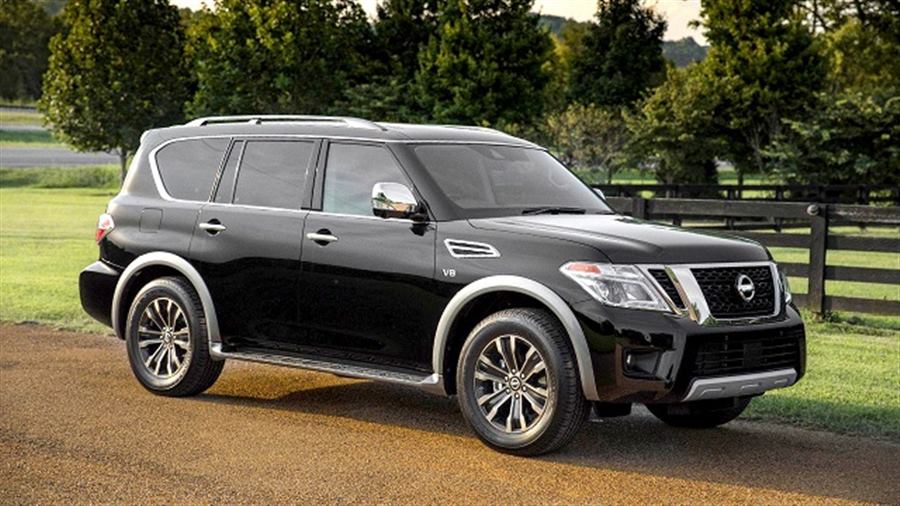
The biggest SUV Japanese company will market the new Infiniti KKS80 for the premium segment on the market, the luxury vehicle is no bigger than before. While the new Nissan Armada will become the competition for ToyotaSekuoia, Ford Expedition, Chevi Suburban and GMC lucon. Most offer an expanded version, but the Nissan Armada offers only one chassis with enough space for a 8,500-pound wheel, which slowly climbs to the top.
2020 Nissan Armada Interior
Leather seats that adorn the interior will definitely raise the level of confrontation while driving. The front seats also have a heating and cooling system, while the entertainment system comes with 8 inches screen, DVD player, wireless headphones. Also, there are functions that will guard you like a self-managing function, a tape warning.2020 Nissan Armada Exterior
The company decided that the 2020 Nissan Armada will be a model that will have a SV with 2vd. 18-inch wheels, which are standard and cruise control. The second package is SL with larger wheels and drive doors, but you get 20 inches.2020 Nissan Armada Engine
The engine starts with a 5.6-liter V8 is the only drive available for this terrain in full size and magnificence. It is suggested that one more unit might be found, and later on the diesel engine will be later. For now, the V8 delivers 390 hp and 395 ib-ft of torque, which is enough for a wagon capacity of 8,500 pounds. The 2-wheel drive team produces almost 20 mpg on the highways, while with four-wheel drive it drops to 18 miles per gallon. 16 mpg combined and 14 mpg for city driving.2020 Nissan Armada Price
Considering how much effort and efforts have been made to create this model, it will be placed on the market at a price below $ 50,000. The best offer will be around $ 48,000. Additional benefits include additional costs, so if you have to pay $ 4,000 for all-wheel drive, the SL package will cost $ 5,000 more than SL Platinum, which is above $ 60,000 for 2VD. While the top version of the Armada Platinum Reserved 4VD SUV will cost almost $ 70k. -
2020 Nissan Kicks
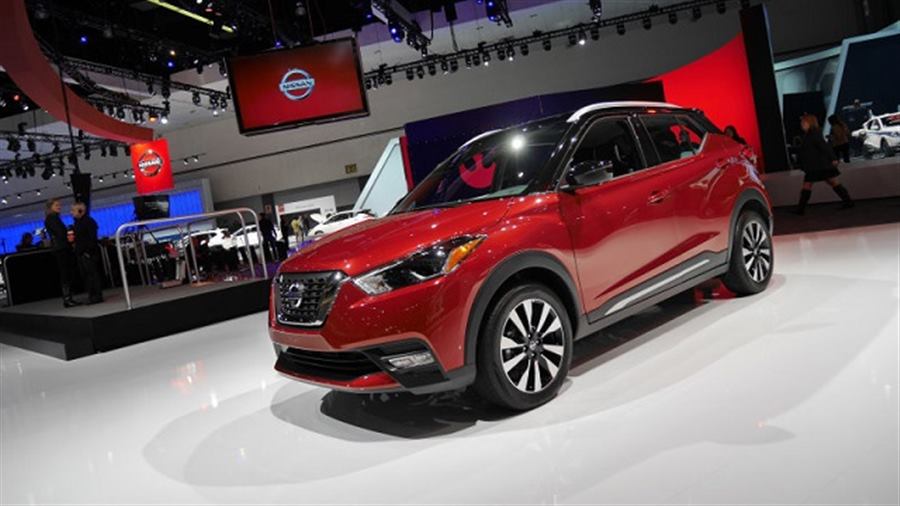
The company did not make a mistake when Juke crossover merged with Kicks. The American market is eagerly waiting for the new model to be found in sales. The designers took care that he came with minor cosmetic changes, both in terms of packages of both equipment. 2020 Nissan Kicks is one of the most efficient small SUVs on the market, will work on its engine, drive, electrification and will surely maintain the level of the most efficient model. His competition can certainly be the Toyota C-HR, Mazda CX-3 and Honda HR-V, Hyundai Kona and Kia Niro, Jeep Renegade and Chevi Trak, which can certainly not be ignored on the market.
Engine choice for new Kicks
2020 Nissan Kicks comes to a market with a 1.6-liter four-cylinder engine. Connected to a CVT transmission that sends power to the front wheels. The four-wheel drive is not available for Kicks, but next season we expect this. Nissan Kicks will return to 33 miles in the gallery in combination with FVD, and the AVD will make 32 million gallons, most likely. The capacity of the wolf 2020 Nissan Kicks will be around 1,100 pounds, which is enough for a small trailer.2020 Nissan Kicks Interior
Technology is what will surely enrich this model and surely overshadow you. 2020 Nissan Kicks comes with several features based on the Pro Pilot project. This model will get a new system that should improve the current characteristics and raise it to a higher level. For now, front sensors can lead to reduced speed and stop if Nissan is too close to the vehicle in front. Also, there will be sensors that will stop cars on traffic lights, and speed will not be controlled only by front sensors but also by radars around a small SUV. it also carries superior navigation with the Bose Auto System, Support, Seven-inch Touchscreen, Apple CarPlay and Android Auto for SV trim, save yourself to be charmed.2020 Nissan Kicks Exterior
The company opted for bigger wheels replacing 16 inches. Also new modern details will appear, such as orange swords and the rear spoiler, and of course, expect modifications that will leave you breathless.2020 Nissan Kicks Price
The new model will keep the current price starting at $ 19,000. This is the best SUV price you will have the opportunity to find. Also, upgrades to the SV level of equipment will surely raise the price for $ 2,000, $ 500 for the SR version. The price will surely jump, but be sure that the investment is good and that this is the cheapest model in the subcompact crossover class that you can find. -
2021 Nissan Kicks First Drive Review: Actually Kicking It Up a Notch
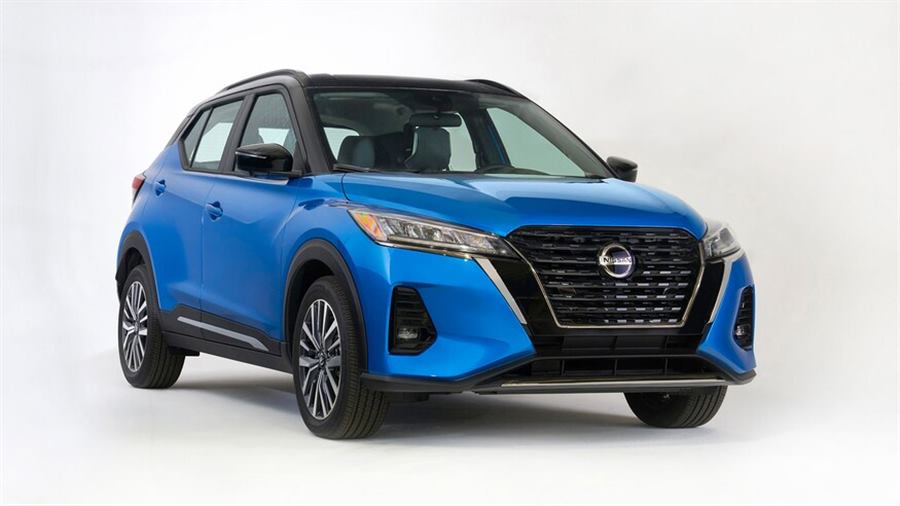
Small but welcome updates keep the nearly new Kicks SUV fresh and competitive.
If I'm entirely honest, the Nissan Kicks didn't have the makings of a hit when it was first announced for the U.S. market. Adapted from elsewhere in the world and a bit behind Nissan's own styling curve, it appeared to be a quick and dirty move to get something, anything in a suddenly hot segment. Driving it, though, revealed its charm. What it lacked in specs it made up in value and practicality. It surprised with a carefully chosen but impressive list of standard features and a genuinely enjoyable driving experience. Even so, Nissan has kept on top of updates, culminating in this smartly refreshed 2021 Nissan Kicks.
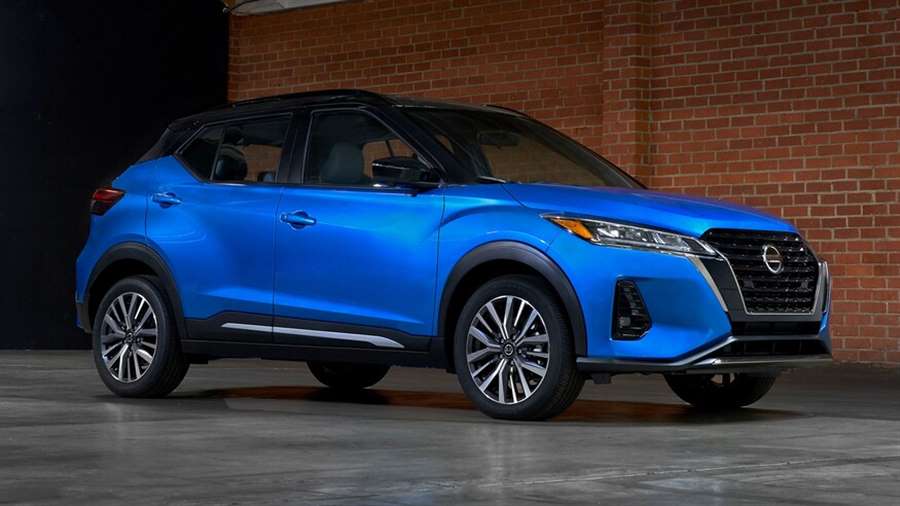
The biggest fix is right up front, where Nissan has given it a nose job. Although the Kicks has always had a fun, funky vibe going on, the old car's puckered face always made it look like it had already been on Nissan lots for years. Pumping up the grille and upgrading the headlights (all the way up to full LED units on the SR trim we drove) have gone a long way toward making the Kicks look like a new car rather than a retread. The rear end didn't need as much help but got it anyway for a net gain.
The most important work, though, was done inside. It sounds like a small thing, but a new center console is worth talking about here. Few things remind you of how cheap a car is as not having a center armrest for the front passengers. Nissan has fixed that with a full-length center console featuring an enclosed bin for your things, an armrest, and big cupholders. Deleting the old-fashioned handbrake made it all possible, and you get a modern electric parking brake as a bonus. Unfortunately, you do have to pay for it because you can only get it on the SV and SR trims. The base Kicks S keeps the old setup.
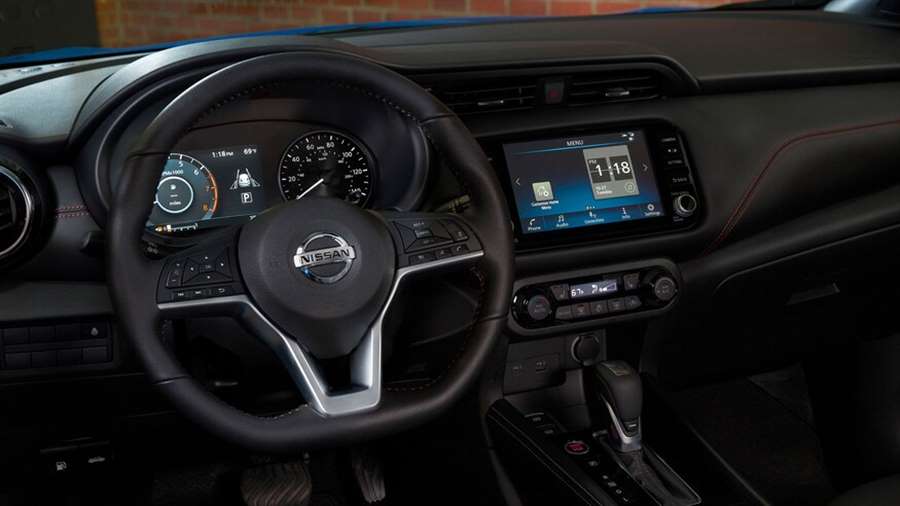
Hovering above all that is an updated infotainment system. Seven inches is standard, but it now provides Apple CarPlay and Android Auto functionality free of charge. The optional upgrade unit grows to 8.0 inches and now includes a Wi-Fi hot spot and over-the-air software update capability.
You have to look a little harder for the other big get. The Kicks has always had the hardware needed for adaptive cruise control but didn't offer the feature until now. Add it to the shockingly long list of active and passive electronic driver aids, which already got a big upgrade for the 2020 model year and most of which is standard on all models.
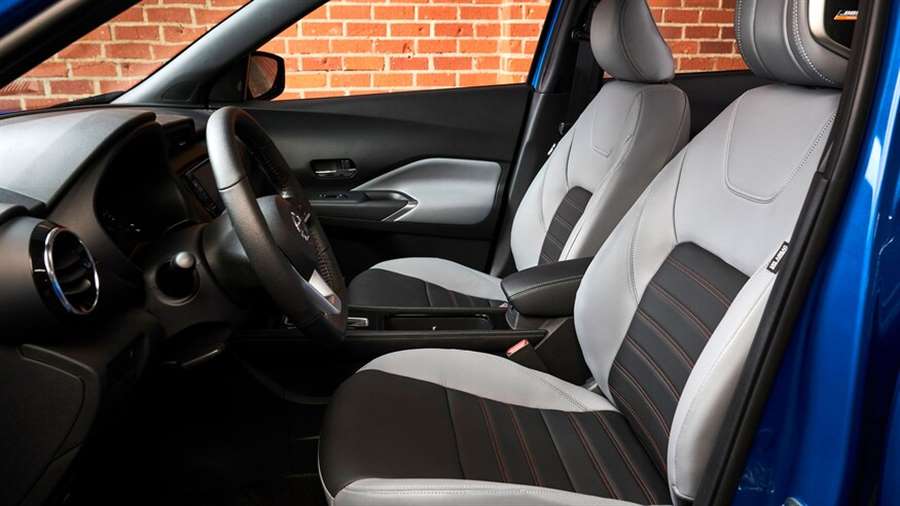
The new splashes of accent colors on the seats and doors are more visible. It's a small thing, but on a car with fun two-tone paint options, the black-on-black interior needed more pizazz, and it didn't take much to dress things up. The Kicks already felt like a screaming deal at $25,000 fully loaded (before dress-up accessories), and the '21 updates only make it feel like you're getting more for your money.
That feeling doesn't extend to the mechanical bits, but they were already doing a fine job. With only 122 horsepower and 114 lb-ft of torque and no substantial weight added, the Kicks drives exactly the same as it always has. Here again, there's nothing special on the spec chart, but Nissan does a lot with a little. Its simple suspension works quite well at providing a comfortable ride and chipper handling. It still has a bit of body roll, and the steering still feels disconnected, but somehow it's fun to swing around a corner when you get the chance.
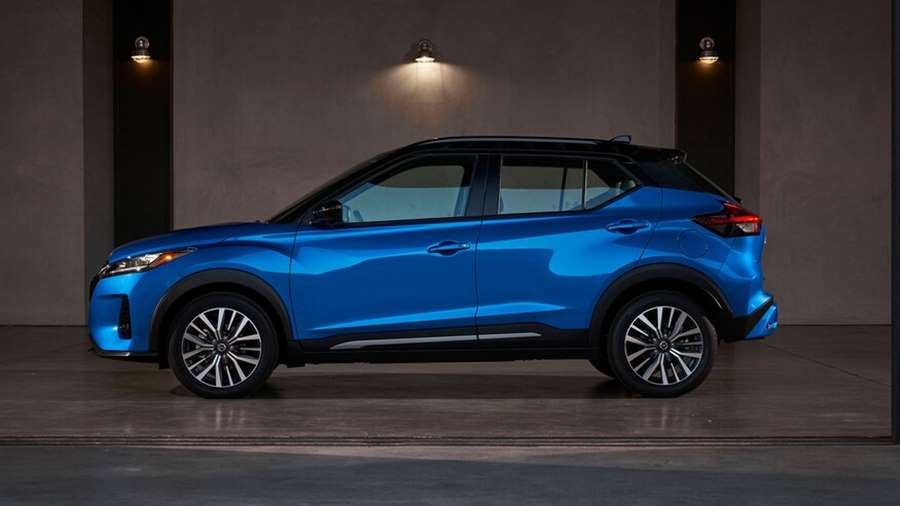
Similarly, the continuously variable transmission is tuned well to make it feel like the little engine is really trying. It's still among the slowest new cars on the road— it needs more than 10 seconds to get up to 60 mph—but its eager demeanor makes it feel quicker than it is. Meanwhile, it continues to get excellent fuel economy at 36 mpg on the highway.
It can get noisy getting up to speed and then cruising on the freeway, so I again have to recommend the SR Premium package if you can swing it. The Bose Personal Plus stereo included in the package delivers better sound quality than some luxury cars I've driven. It's an easy recommendation when the whole package, which gets you nice faux-leather seats, a security system, a cargo cover, and heated steering wheel and front seats, only rang in at $1,000 last year. Now, though, it includes the NissanConnect services, a WiFi hotspot, and over-the-air software update capability, so don't be surprised if the package price goes up.
Although Nissan hasn't released complete pricing yet, we do know the starting price has gone up by $430 to $20,595. That's still an incredible deal, though it's worth remembering the base model didn't get any upgrades. We're still waiting to find out how Nissan will price the SV and SR models with the new goodies. Even if those prices do go up a bit, the Kicks will likely top out in the neighborhood of $27,000, and that still could be a killer deal, especially now that there's even more to back it up.
I've always maintained the Nissan Kicks' greatest quality is its honesty. It's an inexpensive car that doesn't try to trick you into thinking it's something it's not. The good features aren't all reserved exclusively for the top trims or buried in dozens of add-on packages. Everything is straightforward and a solid value. It's a car that knows what features you actually want and delivers them with unpretentious style.
Source: motortrend.com
-
2021 Nissan Kicks Review: Same Value, More Friendly
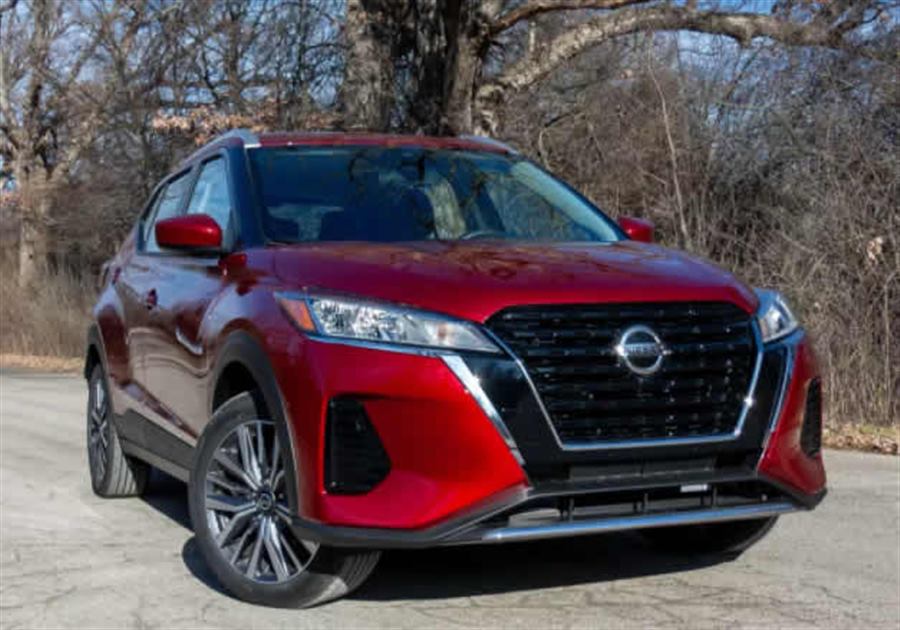
Still cheap, still cheerful, the 2021 Nissan Kicks keeps its tech current while adding some customizable flair.
Versus the competition: With its solid combination of safety equipment, multimedia tech, versatile interior space and value pricing, the Kicks holds its own against competitors like the Hyundai Venue, Kia Soul and other front-wheel-drive-only tiny SUVs. That lack of all-wheel drive keeps it from being fully competitive against models like the Ford EcoSport, Hyundai Kona and Honda HR-V.
The cheap and cheerful end of the SUV showroom is getting a lot of attention from automakers as buyers continue to eschew subcompact hatchbacks and sedans in favor of the slightly larger, slightly taller SUV-style models. Tall crossovers like the Nissan Kicks, Hyundai Venue and Honda HR-V are replacing the Nissan Versa, Hyundai Accent and Honda Fit in the eyes of consumers as the more desirable entry-level models. They’re more expensive than their sedan counterparts, but that hasn’t stopped buyers from making them their choice. In order to keep the Nissan Kicks competitive in the wake of a growing field of competitors, the brand has released a slightly refreshed version for 2021 with some subtle changes inside and out that it hopes will keep the diminutive runabout fresh.
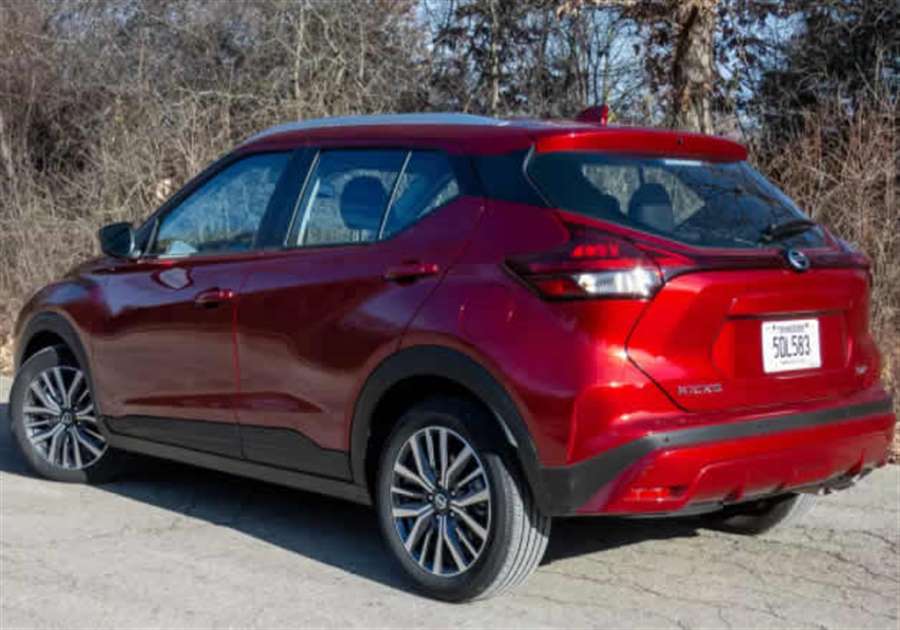
Looks a Little Sharper
Nissan has done a good job updating the look of the Kicks to more closely fit in with the rest of the redone Nissan showroom, all of which is getting a redo as part of the global Nissan Next product update plan. There’s a new grille, headlights, foglights, bumper and trim up front, and revised taillights and trim out back. The look is a very slight change, but it does modernize the Kicks a bit more, and it helps to draw the eye to a wider look even though the car’s track measurements haven’t changed at all. There are also some new wheels available, which are themselves customizable.2020 Nissan Kicks Specs & Reviews Find a 2020 Nissan Kicks Near You
Nissan is introducing a new program that will allow Kicks buyers to personalize their rides through the Kicks Color Studio, which will offer more than a dozen colored elements — including wheel caps and inserts, mirrors, interior vents and more — that can be mixed and matched in ways to suit the buyer’s tastes. We haven’t yet seen what might be accomplished through use of the Color Studio, but the car itself does benefit from all of the styling changes that have been made. It sports the now-ubiquitous, optional, two-tone floating roof treatment that nearly all SUVs seem to have adopted, but its edgy styling does differentiate it from more generic boxes like the Hyundai Venue and Ford EcoSport. The difference between the 2020 and 2021 model Kicks is subtle, and you’d likely have to park one next to the other to spot the changes, but the new aesthetic is more attractive than the outgoing one.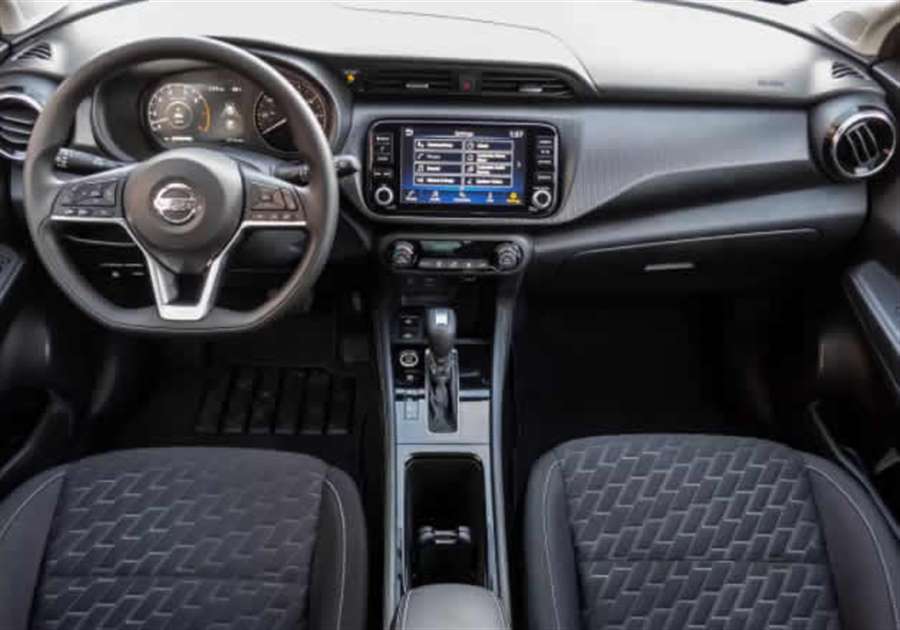
Hope You Aren’t in a Hurry
Powering the Kicks is a dinky 1.6-liter four-cylinder engine making 122 horsepower and 114 pounds-feet of torque. If that doesn’t sound like a whole lot of grunt, that’s because it’s not. It’s mated to a continuously variable automatic transmission that actually does a decent job of keeping the engine in its limited power band, giving the Kicks the descriptor of “adequately powered, but only just.” Let’s put it this way: In a stoplight drag race between a new Kicks and new 121-hp Hyundai Venue, neither would win. If you want more power, you’ll have to look to a Kia Soul, Honda HR-V or a turbocharged Jeep Renegade. But the lack of any sort of sportiness or alacrity to the drivetrain is OK, as the steering and handling aren’t tuned for entertainment purposes, either. The Kicks rides quite nicely, absorbing bumps and road imperfections with impressive damping, but it’s also a bit floaty, leaning more than you might expect in corners or on highway on-ramps. The steering is highly boosted and not blessed with a quick ratio, but again, this isn’t a ding against the Kicks, as the SUV is basically designed to do one thing well: be cheap, reliable, useful urban transportation.The benefit of seemingly being powered by a band of lethargic gerbils is fuel economy that tops the list of competitors: 31/36/33 mpg city/highway/combined, unchanged from the 2020 model year. You won’t achieve those levels if you drive it with a heavy foot, but if you’re using the Kicks as it’s intended to be used, these numbers should be achievable. Part of the reason they’re achievable is that the Kicks is available only with front-wheel drive, similar to vehicles like the Hyundai Venue and Kia Soul, and unlike the Honda HR-V, Ford EcoSport and Jeep Renegade that offer optional all-wheel drive.
This really is intended as a city car, one you’d buy if you have limited parking space, fight narrow streets filled with delivery trucks all the time, or need a basic conveyance to get you and friends or cargo around town easily. In that role, the Kicks excels — lower-speed stop-and-go traffic is where it truly feels most at home, with excellent outward visibility, surprisingly good sound insulation and an upright, high-sitting driving position that makes you feel like you’re piloting something other than a dinky little subcompact SUV. It’s not that the Kicks can’t handle the highway — it does so rather well, with a surprising amount of steady high-speed calmness for such a small vehicle. It’s just that the compact dimensions, clever packaging and ease of use lends itself to tighter urban environments instead of America’s wide interstates.
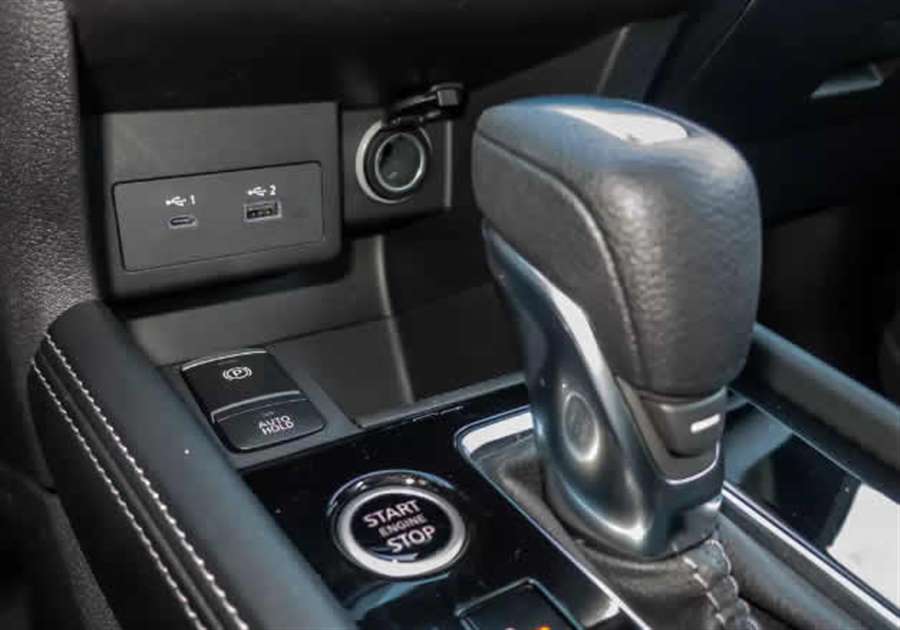
New Tech, Nicer Inside
The interior gets a little love from Nissan in this refresh, as well, but just like the outside, changes are minimal and designed to further improve the experience, not dramatically change it. First and foremost is the new optional 8-inch touchscreen; a 7-inch screen (2020’s only offering) is still standard. The new 8-inch model feels big in this compact interior, and all versions now feature standard Apple CarPlay and Android Auto, another thing that used to be optional. The rest of the interior looks largely the same, with Nissan insisting there are new materials, new vents, new trim and new covering material for the dash and doors. A new center console armrest replaces the previous driver-seat-mounted armrest, but it’s still too small and too low to be of any use for actually resting your arm.The interior isn’t overly spacious, but it doesn’t feel cramped. The seats sit high but are oddly firm and not terribly comfortable for longer missions. Backseat room is adequate, with decent room for two to sit without their knees pressed against the front seatbacks. It doesn’t feel like it has the bountiful legroom of a Nissan Versa or Sentra, but it’ll do for getting friends to dinner across town or younger kids to soccer practice. The cargo area is surprisingly large, with a deep well and a surprising reach from the liftgate to the rear seatbacks that make for more room back there for luggage or boxes than you might expect to find. Of course, those seatbacks fold to increase the cargo area, but they don’t fold flat; they remain raised above the level of the cargo floor, so the surface isn’t totally flat for larger items.
Research the Nissan Kicks
The cabin is competitive with others in the class thanks to the updated multimedia system, the option of up to four USB ports (two type A, two type C), and its acceptable level of space and utility. The Honda HR-V still feels like it has a more cavernous cargo area, especially with its trick folding backseat stowed, and the Hyundai Venue’s interior feels a bit more upscale, with a multimedia system that simply seems better designed and a level of standard safety systems that hasn’t yet been beaten. But the Kicks feels like an easily viable alternative to any of them, with its subtle improvements keeping it in the hunt for those first-time buyers seeking something new and relatively affordable with all the latest tech, a solid level of standard safety equipment and a value equation that definitely works in its favor. It’s a decidedly competitive entry to the burgeoning field of entry-level vehicles and should be on anyone’s consideration list when shopping for one.Full pricing for the 2021 Kicks was not yet available at the time of publication, but overall pricing is not expected to be appreciably different from the outgoing 2020 model given its starting price of $20,595 (including destination), a modest $430 increase.
Source: cars.com
-
2021 Nissan Rogue Review: More Steps Forward Than Backward
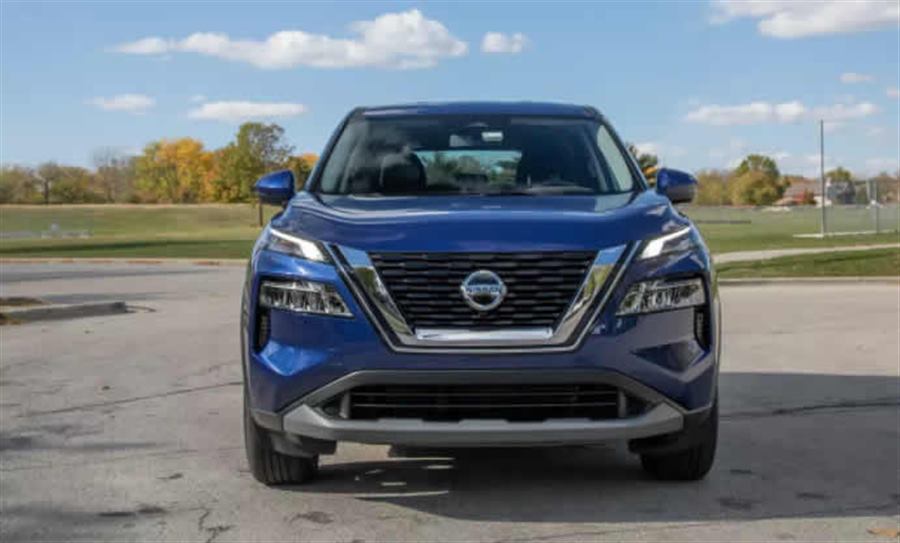
The verdict: The redesigned 2021 Nissan Rogue adds much-needed driving refinement, though it comes with a bothersome side of ride firmness.
Versus the competition: Return shoppers will miss the outgoing Rogue’s soft ride, but firm suspension tuning never stopped a compact SUV from selling like gangbusters. Other aspects run the gamut, and our overall impression is two steps forward, one step back.
Redesigned for 2021 with running lights spaced high above the headlights — a look popularized by the old Juke and, now, a smattering of Hyundai models — the Nissan Rogue comes in four trim levels: S, SV, SL and Platinum. Each offers front- or all-wheel drive; compare the trims here or stack up the 2021 and 2020 Rogue here. Don’t confuse it with the Rogue Sport, a smaller model based on a separate platform. All trim levels pair a 2.5-liter four-cylinder engine with a continuously variable automatic transmission. We evaluated a Rogue SV AWD.
Improved Road Manners, Mostly
Competitors steadily surpassed the outgoing (2014-20) Rogue in the all-important battleground of ride and handling. When we compared Nissan’s compact SUV against the field in late 2017, it ranked mid-pack in ride quality and last, by a mile, in handling. The redesigned Rogue makes significant strides on the latter front, with a quick enough steering ratio for precise directional adjustments as you negotiate sweeping on-ramps. Nissan dialed back much of the prior generation’s nose-heaviness and numb steering, too. Steering and dynamics aren’t exactly towering strengths for the new Rogue, but they’re far from liabilities.
Unfortunately, that comes at a cost: The suspension introduces a degree of impact harshness over potholes and sewer covers that the outgoing Rogue dispatched with minimal complaint. Nissan says suspension tuning is the same across all trim levels, and our SV test car had 18-inch wheels (S trims have 17s, but the SL and Platinum have 19s, which may ride harsher still). Overall isolation and body control are fine, but the shock firmness is puzzling, given the Rogue’s comfort-oriented history. Perhaps Nissan benchmarked the current-generation Honda CR-V and Toyota RAV4, two popular but firm-riding rivals. In any case, the pendulum has swung both ways at Nissan: The recent Sentra redesign stays fittingly soft, while the current-generation Altima skews firm.
The 2021 Rogue gets the same 2.5-liter four-cylinder engine from that Altima (here it makes 181 horsepower and 181 pounds-feet of torque), rejiggered from an earlier 2.5-liter that preceded it. Paired with a CVT that raises revs fast enough from a standing start, the 2.5-liter provides enough power around town but needs most of its reserves to reach highway speed, especially with multiple occupants aboard. If you need more power while already in motion, the CVT again increases engine rpm quickly enough. It’s slightly quicker in a driver-selectable Sport mode, but that setting keeps revs awkwardly high all the time — not simply hastening the transition, as effective Sport modes often do.
The Interior: Quality and Utility
Rife with all the trending elements in today’s automotive interiors, the Rogue’s cabin features a floating touchscreen, electronic gear selector and high center console, plus lots of stitched dash and door surfaces. Quality mostly lives up, with generous padding where your arms rest and a sturdy grade of fabric upholstery in our test car. Cost-cutting becomes evident once you get to the backseat — the norm in this class, though a few rivals improve on it. Leatherette (vinyl) and leather are both optional, and upper trims pad where your knees meet the console. That’s a useful provision, as its bulky design inhibits some lateral space. Nissan’s spring-loaded electronic gear selector feels a bit rickety to operate, but it’s a rare blemish among otherwise high-quality controls.
Interior storage is in good supply. With no mechanical linkage to select gears, the center console has a medium tray underneath, plus multiple cubbies around the cupholders. Gone is the outgoing Rogue’s deep glove compartment, but the other nooks more than make up for it. Unfortunately, utility behind the front seats takes, well, a slight backseat. The rear seats lose the outgoing Rogue’s 40/20/40-split, reclining functionality and sliding adjustment, the latter of which allowed owners to maximize cargo or passenger space; now the seat just reclines in a traditional 60/40 split. Legroom is fine, but the bench sits a bit closer to the floor than before, such that some adults may find their knees uncomfortably elevated.

We measured 17.1 cubic feet of cargo volume behind the backseat in our Rogue SV, and that’s with a fixed cargo floor. SL and Platinum grades get Nissan’s Divide-N-Hide cargo system, which has a dual-level load floor that should add slight volume. In any case, the SV’s room lands within fighting range of others (we measured 18.7 cubic feet in a Toyota RAV4 Prime, for example). Note that it comes by way of our independent accounting of cargo space, a practice we’ve instituted amid inconsistent methodology from manufacturer-reported volumes.
Technology and Safety
The Rogue’s standard 8-inch touchscreen has Apple CarPlay and Android Auto, both via tethered connections, and two USB ports. Tech options include two additional backseat USB ports and an upsized (9-inch) touchscreen with wireless CarPlay, plus 12-inch virtual gauges, wireless smartphone charging and a Bose premium stereo. (Android Auto is strictly a tethered connection; no wireless connectivity is available.)
As of this writing, third-party crash tests have yet to be published for the 2021 Rogue. Standard safety features include automatic emergency braking with pedestrian detection as well as blind spot and lane departure warning systems. Nissan’s ProPilot Assist system, included on the SV grades and up, incorporates adaptive cruise control with hands-on lane-centering steering, both of which work from a stop all the way up to highway speeds. Note that this isn’t the automaker’s second-generation ProPilot Assist with hands-free lane centering, which debuted on the new Ariya SUV.
Features and Pricing
Including destination, the 2021 Rogue starts just under $27,000. That’s a stone’s throw from its predecessor, and in the thick of its rivals’ starting prices. Characteristic of the class, it’s well equipped on the safety and multimedia fronts but basic beyond that: Rogue S shoppers can expect manual seats, cloth upholstery, manual climate control and basic keyless entry.
Climb the trim levels, and you can get a panoramic moonroof, hands-free power liftgate, vinyl or leather seats, keyless access, power front seats (though without a passenger height adjustment), tri-zone climate control and heated seats in both rows. A loaded Rogue Platinum AWD tops out in the high $30,000s, which is also competitive.
Naturally, the Rogue’s improved agility is a modest adjustment to what it once was; this is no sports car masquerading as an SUV. The improvements come at some expense to comfort, and the utility setup takes half a step backward. But the SUV takes more steps forward, and it doesn’t come with a huge jump in price. In balance, it’s a notably better SUV than the one it replaces — something shoppers who don’t prioritize comfort or utility can appreciate.
Source: cars.com
-
2022 Nissan Frontier PRO-4X First Drive: What We Hoped For
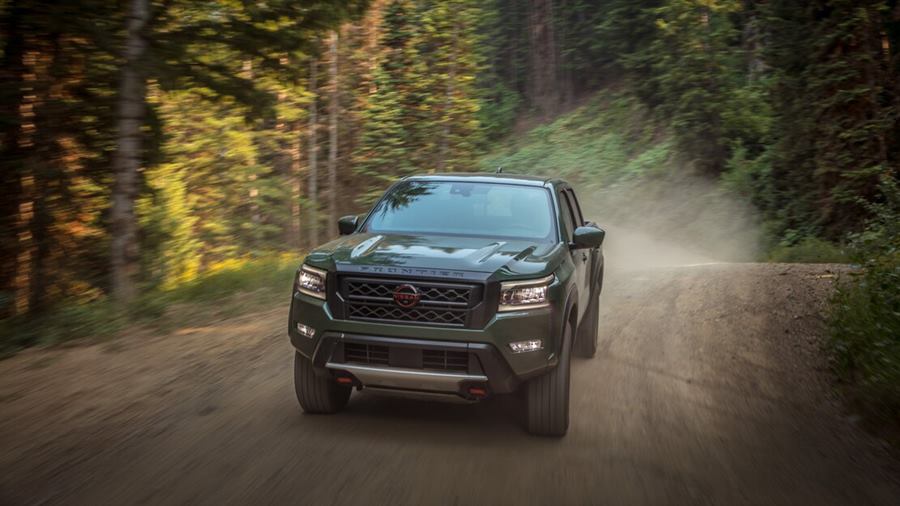
Nissan delivers a midsize pickup that can hold its own against any direct competitor.
It has been a long 17 years, but the much-awaited Nissan Frontier is finally on its way to dealerships, and just prior to their arrival, we were invited out to drive the newest midsize pickup. Continuing Nissan's 62 years of pickups in America, the 2022 Frontier puts a focus on being rugged, capable, utilitarian, and modern.
First off, let's level set what the Frontier PRO-4X is and what the Frontier is and is not. It is not a "Raptor fighter" or a Tacoma TRD Pro or Chevy Colorado ZR2 competitor. What it is, is Tacoma TRD Off-Road, Ford Ranger FX4, and Chevy Colorado Z71 competitor, leaving Nissan with plenty of headspace if it wants to enter the market with a Nismo package in the future.
2022 Frontier Chassis
The new Frontier uses a heavily modified version of the outgoing truck's F-Alpha architecture that it shares with the Titan. "Why not an entirely new one?" you might ask. Because the Frontier platform was already competitive to begin with, and instead of spending a billion dollars on a new platform, Nissan upgraded the chassis and spent its money in areas people would appreciate, such as design, interior, technology, and powertrain.
Some of the platform's new features include over 40 parts to improve NVH, including hydraulic cab mounts to further isolate the occupants from the rough-and-tumble world outside. The Frontier also switches to urethane jounces, adds a dynamic steering damper, and retuned rack-and-pinion with a steering gear ratio that has been increased by 16 percent.

Powertrain
By now the direct-injected 3.8L DOHC V-6/nine-speed combo should be familiar since it debuted in the previous truck for the '20 model year and stuck around in '21. It has a class-leading 310 horsepower, 281 lb-ft of torque, and it's more fuel efficient than the old four-cylinder. No manual transmission will be offered.
Frontier Design
One area of the new truck that seems to resonate well with just about everyone we've talked to is the Frontier's exterior design. From the taller shoulders and chiseled body to the new face, the Frontier has a great stance and looks tough. The bedsides were brought up 1.4 inches, giving the new Frontier more bed volume and additional depth that is helpful for keeping the tops of coolers and fridges below the bed rail. Nine exterior colors will be offered.

Interior Is More Upscale
Now sporting one of the best interiors in the class, the Frontier feels premium with a dash that is fit for a truck, and not something borrowed from an economy car. The big 9-inch display (standard on the PRO-4X) is borrowed straight from the Titan. With its high resolution and inky blacks, it's the centerpiece to the Frontier's new push to be a real contender in this class once again.
With a wrapped and stitched dash and door panels, Lava Red interior accents, and soft-touch panels, the Frontier feels more upscale than ever before. Front-seat passengers are treated to the supportive and comfortable Zero Gravity chairs, and thanks to a impressively quiet interior, they can rock out to the 10-speaker Fender Premium audio system that sounds more crisp and clear than anything else in the segment.
From a layout standpoint, most of the controls are right where you expect them to be, with only a few buried to the left of the wheel. The Frontier is easy to operate and has a fair amount of storage for its size, plus niceties, such as wireless phone charging and eight cupholders, four of which can hold 32-ounce bottles. Finding a good seating position is easy, but the addition of a telescoping steering wheel would make it that much better.
Nissan did a good job of making the Frontier interior as space-efficient as possible without growing the truck. Two full-size guys can sit in the front without touching shoulders, and the back seat remains big enough for all but the longest trips. The rear seat even has an armrest, and the 60/40 seat cushions fold up stadium style, or can fold down, depending on your cargo needs.

Technology Packed
Nissan wants technology and safety to be accessible, so the Frontier is packed with standard and optional features including the first application of Nissan Intelligent Around View Monitor with Moving Object Detection, Nissan Safety Shield 360, a Wi-Fi hotspot, Apple CarPlay and Android Auto, multiple USB-A and USB-C charging ports, 120V outlet with 400-watt capability (one in the rear and one in the bed), Intelligent Cruise Control, Traffic Sign Recognition, Intelligent Driver Alertness, rear sonar and Rear Door Alert. The Frontier features eight standard airbags.

On-Road
All the NVH improvements are apparent, and the solid thunk of the doors closing gives you an idea of what to expect from behind the wheel of the Frontier. Steering feel is exceptional, albeit with a little too much effort required for a truck that is likely to spend most of its life traversing the urban landscape and wheeling into tight parking spots. A little additional assist would be nice. Steering effort aside, we do need to point out just how directionally stable the Frontier is, easily holding a heading without much pilot input.
Throttle tip-in is good, although the nine-speed automatic could shift a little quicker and firmer (a fix Nissan engineers tell us is already being addressed). We do think the V-6/nine-speed is a good combo, well matched to the truck, and delivers solid acceleration. On the "whoa" side, the Frontier's brakes have great pedal feel and are easy to modulate.
The PRO-4X has a 6,270-pound max towing limit and standard trailer sway control. We tested the truck with a 5,800-pound boat with inertia brakes on the trailer, and the Frontier handled the load much better than its size would imply.
The Frontier feels stable, solid, and treats the driver to excellent outward visibility. This is a truck we wouldn't hesitate to take on a 1,000-mile road trip right now.

Off-Roading
On the trail, the Frontier's perfect size allows it to get into tight spaces, and we like the tuning on the Bilsteins, although it could benefit from a hair more travel for those who like to push it. That being said, the Frontier is a fun, tossable little truck that has a traction control system that keeps the truck moving in 4-Hi, where the rear locker can't be actuated (it's still 4-Lo only).
Thanks to its low First gear of 5.425, the little Nissan has a solid crawl ratio of 54.42, and if that's not enough, the hill descent control system is very effective, without any of the loud solenoid firing of the competition.
Overlanders and car campers will agree that the Pro-4X's 1,230-pound payload capacity will allow a fair amount of gear and passengers to go along on the next adventure.
If there were any suggestions we'd make to Nissan, it would be to offer a more aggressive tire to give us more confidence in tougher terrain, because the chassis is good for it, especially with full underbody skidplating. We'd also ask that Nissan allow the off-road camera system to work at higher speeds. The threshold of 6 miles per hour is just too low to be useful in many situations.
We do love that the Frontier is still a driver's vehicle, with none of the preset drive modes offered in other trucks. It's still an honest little pickup that puts the driver in charge.

Pricing
With a starting price of $37,240 for the PRO-4X in its sole Crew Cab configuration, the Frontier offers good value for the money. Only three option packages are available (Technology, $990; Convenience, $1,990; and Premium, $2,790), so fully loaded the Frontier comes out to $43,010, before a destination charge of $1,175.

Conclusion
The new Frontier is the truck we'd hoped it would be and more. It raises the bar in design and amenities and is a good value with a lot of content for the price, along with the capability you've come to expect from Frontier. While it won't dominate the higher end of the off-road segment, it can challenge any direct competitor and hold its own. If our experience out on the road is any indication, the design alone will bring in more potential customers. For those looking for a bit more out of the Frontier, NISMO has a line of accessories available, including the Bilstein 6112/5160 performance shock package. We are hopeful this means Nissan has the appetite for an even higher-capability model to go toe to toe with the TRD Pros and ZR2s of the world in the near future.

QUICK SPECS
2022 Nissan Frontier Crew Cab PRO-4X (as tested)
Base price: $37,240
Price as tested: $43,010
Engine: VQ38 3.8L DOHC DI V-6
Rated hp/torque (lb-ft): 310/281
Transmission: 9-speed automatic
4WD system: 2-Hi, 4-Hi, neutral, 4-Lo
Low-range ratio: 2.717:1
Frame type: Ladder
Suspension, f/r: Independent double wishbone with Bilstein monotube shocks/Overslung Dana 44 solid axle with multi-leaf and Bilstein monotube shocks
Axle ratio: 3.692:1
Max crawl ratio: 54.42:1
Steering: Speed sensitive power rack-and-pinion
Brakes, f/r: 11.7x1.1-in vented disc with 2-piston caliper/11.2x0.7-in vented disc with single-piston caliper
Wheels (in): 17x8
Tires: LT265/70R17 Hankook DynaPro AT2
Wheelbase (in): 126.0
Length (in): 210.2
Height (in): 72.9
Width (in): 74.7
Base curb weight (lb): 4,708
Approach/breakover/departure angles (deg): 32.3/19.6/23.0
Minimum ground clearance (in): 9.4
Payload (lb): 1,230
Max towing capacity (lb): 6,270
Fuel capacity (gal): 21.0
Fuel economy (EPA mpg, combined/city/hwy): 19/17/22(motortrend.com)
-
2022 Nissan Frontier Review: Model Lineup, Exterior, Interior, Driving Impressions
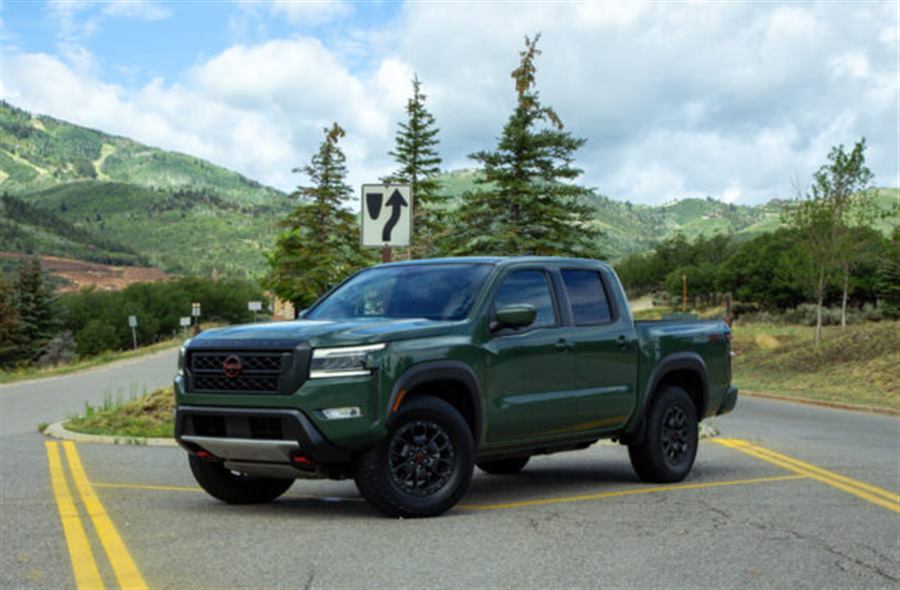
The Nissan Frontier pickup truck has been redesigned for 2022. It’s more modern, with good technology in the cabin and a ride quality to meet the standards of today. In addition to a new cabin and suspension, the chassis has been revised and the exterior styling gets a full makeover.
The Frontier remains mid-sized with the same wheelbase of 126 inches and the same 5-foot bed on the crew cab, and longer wheelbase with 6-foot bed on the extended cab. But the overall length of both versions has been increased by 4.5 inches, all at the grille and front bumper.
The new Frontier is still brawny, if less distinctive because so many trucks since then have gone for a similar look. The 2022 Frontier has bulging fenders and a long sculpted hood that protects its 3.8-liter V-6. It produces 310 horsepower and 281 pound-feet of torque, mated to a 9-speed automatic transmission.
The drivetrain powers the rear wheels in standard configuration, while part-time 4WD with hill descent control is available. It’s a solid powertrain, the engine smooth and transmission responsive. It can tow 6,720 pounds–that’s the two-wheel-drive extended cab which comes standard with a trailer sway control, a system that automatically dabs the brakes if it feels anything starting to wander.
The new Frontier also handles better, with less body roll thanks to a bigger stabilizer bar in front and revised bar in the rear.
The Pro-4X model, for serious off-road use, comes with Bilstein dampers, skid plates to protect the bottom of the engine, transfer case, and fuel tank, plus a Dana rear axle and electronic locking rear differential, There’s also a Pro-X without 4WD, with just the Bilsteins but all the looks, including 32-inch Hankook all-terrain tires mounted on 17-inch alloy wheels.
The cabin catches up in technology, with an 8.0-inch touchscreen with Apple CarPlay/Android Auto, a 7.0-inch info display, and four USB ports.
The EPA rated the rear-wheel-drive Frontier at 18 mpg city, 24 highway, 20 combined, with the four-wheel drive at 17/22/19 mpg.
It hasn’t been crash tested yet, and automatic emergency braking is not standard. Blind-spot monitors, automatic high beams, and a surround-view camera system can be ordered.
Model Lineup
Made in Mississippi, the Frontier comes in S, SV and Pro-X models, with RWD or 4WD, and as an extended cab or crew cab.
The Frontier S starts at $29,015 for the 2WD extended cab, or $30,515 for 2WD crew cab. Four-wheel drive adds $3,200 or $3,000, respectively. It’s equipped with Bluetooth, four USB ports, LED taillights, 16-inch steel wheels, and trailer sway control.
The SV costs $31,715 and adds a power driver seat, 17-inch alloy wheels, a tow-haul driving mode, power mirrors, and automatic emergency braking.
The list of optional equipment includes heated front seats, a Fender sound system, and surround-view camera system.
The $35,415 Pro-X and $38,415 Pro-4X are crew cabs. They have a 9.0-inch touchscreen with navigation, 18-inch alloy wheels, more skid plates, and Bilstein shocks.
Exterior
The Frontier has been more than redesigned, it’s been transformed into an angular and boxy-ish truck that’s the style today. The word Frontier appears large on the tailgate, which for 2022 is damped so it can’t slam down, or up.
The bulging and boxy fenders suggest a boxer’s shoulders and biceps. The details of the Pro-X make it look even tougher, with a highly visible skid plate in front, red tow hooks that stick out of the fascia, vertical intakes for cooling air, black alloy wheels, and LED daytime running lights.
Interior
The Frontier’s redesigned interior is much better than that in the previous truck. Make no mistake, it’s rugged like the exterior but more tranquil, with better materials and sound deadening. On the freeway, the cabin is almost silent.
A large touchscreen and intelligently located controls give the cabin a better attitude for hard work. It’s outfitted with lots of storage, and after a full day’s drive, the front seats proved their worth with good support.
The back seat’s better used for tools and equipment in extended-cab form. Its rear seat is a tiny bench. In the crew cab, back-seat passengers get more space to stretch out.
Driving Impressions
For a truck, the Frontier is reasonably rapid, with more than enough power for passing, with 310 horsepower and 281 pound-feet of torque from its 3.8-liter V-6. It uses a 9-speed automatic whose first three gears have low ratios that quicken the acceleration from a standing start and at low speeds. Cruising in higher gears, it responds reasonably quickly when the driver asks for more acceleration, without the hesitation we’ve experienced with rival 9-speeds.
The tow limit is 6,570 pounds and payload limit 1,480 pounds.
But it’s the ride where the Frontier excels. Its frame has been reinforced and its suspension has been retuned to improve stability. The new Frontier is so composed we might say it’s uncanny, at least compared to the old one.
The steering is quicker than the old truck, too, and that’s especially felt around town.
The Pro-4X, with Bilstein shocks, is more capable over rocky ground than the previous version.Final Word
The 2022 Nissan Frontier has been completely redesigned, and it’s now one of the leading mid-size trucks. It’s a solid all-around performer, with the latest in technology available or standard across the board. Make it an SV—and make it a crew cab for the best value and utility.
Source: newcartestdrive.com
-
2022 Nissan Juke
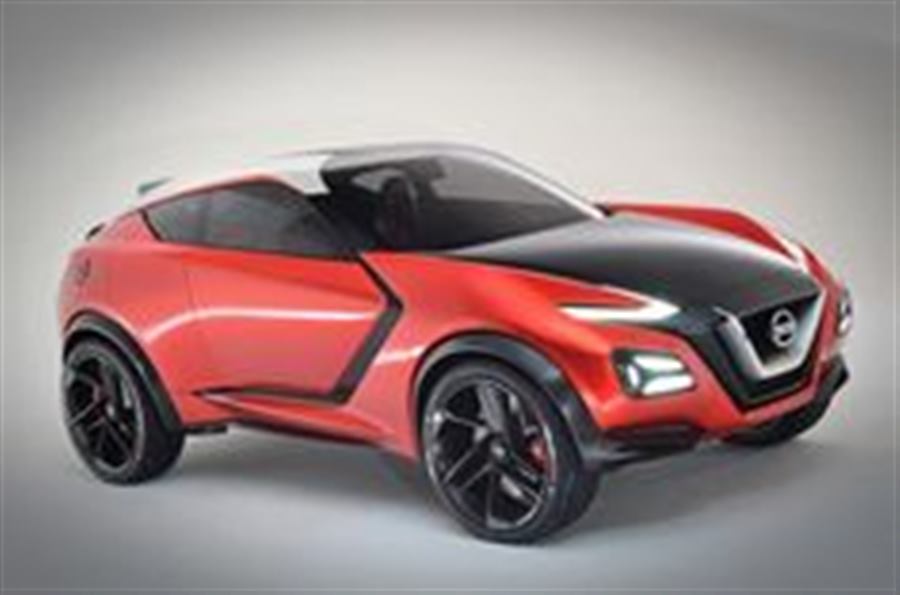
Nissan's boldly-styled baby SUV is back
Nissan Juke will arrive in UK showrooms next year, complete with more interior space and bolder styling than ever before, an all new.
What is the 2022 Nissan Juke?
Thanks to its bold styling, the Juke is the smallest SUV that Nissan makes, and stands out from the crowd. It’s an important vehicle in the history of the automobile, Nissan also says, claiming the first generation of Juke, launched in 2010, pioneered the compact crossover class that is now one of the most hotly contested sectors of the new car market. Mind you, other car makers have made similar claims, the three-door Toyota RAV4, for example, was launched a full 16 years before the Juke.
Nissan’s mini-crossover has proved extremely popular and in July last year the one millionth Juke rolled off the production line at Nissan’s Sunderland Plant, whatever. Nissan said a brand new Juke is built at the plant every 105 seconds, in a press release announcing the milestone.
It’s now nine years since it first appeared on our roads, but the model is overdue an all-new version.
Nissan has retained much of its bold design, though its reworked front end is likely to put off fewer buyers, because a big part of the original Juke’s appeal stemmed from its divisive styling, its bug-eyed headlights in particular.
However, the car maker has made big changes under the skin, the new Juke is claimed to have 20% more boot space than the original model and it comes this time with much more gadgets and technology. The car is much better to drive, of course, Nissan says.
Patriotic British motorists who are interested in a new crossover may want to consider the new Juke, as the car will still be built in Sunderland, at the time of writing for the foreseeable future at least, while Nissan is a Japanese company.
What engines will the 2022 Nissan Juke have?
Nissan Juke buyers will have access to just one engine, a 1-litre, turbocharged three-cylinder petrol that produces 115bhp, from launch. As it’s the same spec fitted to the facelifted Nissan Micra we reviewed back in February 2019, regular readers of Driving.co.uk might very well be familiar with this engine. The new Juke comes out of the box with a six-speed manual transmission, like the equivalent Micra.
A seven-speed automatic is available on all trims bar the entry-level “Visia” spec as a £1,400 optional extra, unlike the similarly-sized supermini. The 1-litre engine in the Micra can return 47.9mpg on the combined cycle, but fuel economy figures will be revealed closer to launch.
The new Nissan Juke will only be available as a front-wheel drive car, it’s also expected.
Will there be a hybrid or electric Nissan Juke ?
It hasn’t said anything about adding more motors to the mix, while Nissan has confirmed the engine it will launch with the Juke. It remains to be seen whether the car maker has any plans to launch a hybrid Juke variant anytime soon,also.
The Renault-Nissan-Mitsubishi Alliance is no stranger to electrified car tech, Nissan builds the pure-electric Leaf in Sunderland, and Renault is currently working on a hybrid engine for its new Clio supermini, a hybrid Nissan Juke isn’t beyond the realms of possibility, as well.
What tech will the 2019 Nissan Juke feature?
Juke perhaps unsurprisingly is a more advanced piece of kit, with nearly a decade separating the original car from the new version, the second-gen. It will feature an impressive array of safety aids, in particular.
Will come all versions with lane departure warning, autonomous emergency braking, lane keep assist, traffic sign recognition and an “Active Trace Control” that applies the brakes to individual wheels to help the car hug the inside of corners.
Available other items across the range as standard or optional extras, depending on the trim buyers go for, include: Apple CarPlay and Android Auto, reversing cameras, automatic climate control, heated front seats, Bose premium stereo system, Nissan’s suite of semi-autonomous Pro Pilot driver aids.
How spacious is the 2022 Nissan Juke’s interior?
So it’s no surprise the car maker has made big strides to improve this in its replacement, because the original Nissan Juke was criticised for its limited practicality. Being barely any bigger than its predecessor, the new Juke is now much more spacious: at 422 litres, the boot is 20% bigger than it was before, and Nissan says head and leg room have grown by 1.1cm and respectively 5.8cm.
How much will the 2022 Nissan Juke cost?
It’s not a huge surprise the latest Nissan Juke is a bit pricier than its predecessor, with all the new tech on board. The previous Juke in entry level Visia spec started at £15,520, the same trim on the new Nissan will set buyers back £17,395. For the flagship spec, the gadget-laden Tekna+ spec, price begin at £23,895.
An even plusher ‘Premiere’ trim will be available, from £23,995 from lunch. Identical to the Tekna+ trim, this version is differentiated from the other models by its race car like Alcantara fabric interior trimming, 19in alloy wheels, a claimed first for a Nissan Juke, as unique body styling and an exclusive black body and red roof paint scheme. Get your order in quick, as only 140 examples will be coming to the UK, if that’s the spec for you.
When will the 2022 Nissan Juke go on sale?
For the new Juke, Nissan now accepting orders. The end of November 2019, the car maker claims the first customer cars should land in the UK towards.
What are the Nissan Juke’s rivals?
The latest model will have many cars to compete against when it arrives on UK roads, with the compact SUV market having exploded in the 10 years since the first generation Nissan Juke was unveiled.
Main competitors of the new Nissan Juke’s include the Kia XCeed, Volkswagen T-Cross, Citroën C3 Aircross, Hyundai Kona, Kia Soul, Mazda CX-3, Fiat 500X, Peugeot 2008, Ford EcoSport, Renault Captur, Vauxhall Mokka, Jeep Renegade, Honda HR-V, SEAT Arona, and Toyota C-HR.
-
2022 Nissan Pathfinder FWD SUV First Test: Lighter, But Is It Better?
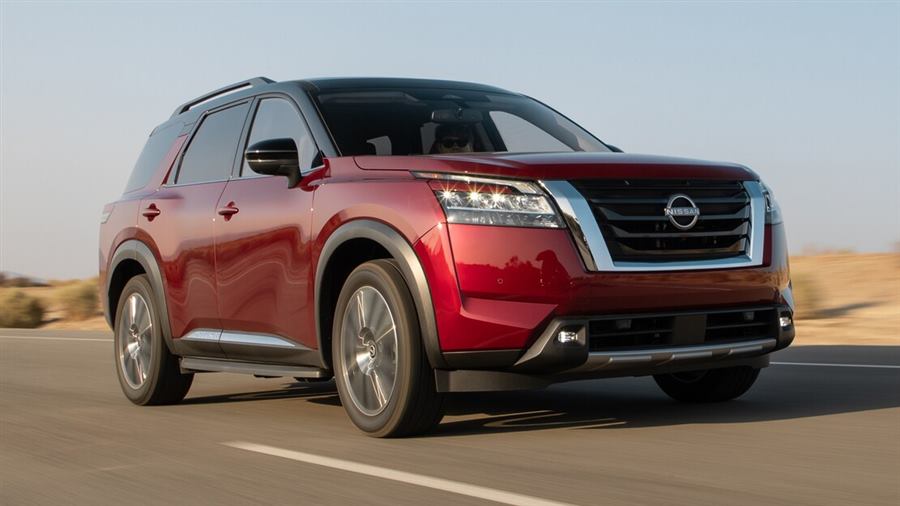
It uses the same platform and engine as its predecessor, but the new Pathfinder looks like the brawny SUVs of old.
We already put the 2022 Nissan Pathfinder three-row SUV with all-wheel-drive through its instrumented paces. Now it's time to get the front-wheel-drive version of Nissan's latest Pathfinder in the hands of MotorTrend's test team so consumers know what to expect from the rest of the lineup.
The Pathfinder has had an interesting history and is unique in its path to reinvention, having flipped from body-on-frame to unibody repeatedly during its lifecycle. It started as a two-door SUV in 1986 on Nissan's compact truck body-on-frame platform and added a four-door in 1989, discontinuing the two-door a year later in North America. The second-gen Pathfinder went on sale in 1995 with unibody construction. Then the third-generation SUV made a surprising return to body-on-frame in 2004 for the '05 model year, only to pivot back to unibody for the fourth-generation Pathfinder in 2012, sharing a platform with the Nissan Altima, Maxima, and Murano, among others.
For this fifth generation, the Pathfinder actually stays unibody on the same platform, but it drops the milquetoast design in a return to the squared-off, brawny looks we've come to associate with this SUV, regardless of its underpinnings. The styling changes inside and out are in keeping with a resurgence in design among new Nissan offerings of late.

2022 Nissan Pathfinder Competitively Priced
The two-wheel-drive Pathfinder starts at $47,340, and at $49,865, our test model didn't ring in much higher. That price reflects the addition of $730 running boards, a $745 two-tone premium paint scheme, a $795 lighting package with illuminated kick plates and welcome lighting, and $255 carpeted floormats. A comparable 2021 Toyota Highlander Platinum trim FWD starts slightly higher at $48,755, and a 2022 Honda Pilot Elite costs about $2,000 more but only comes in AWD.
Nissan also carried over the previous Pathfinder's 3.5-liter V-6 engine, which generates 284 horsepower and 259 lb-ft of torque, but the previous model's CVT has been replaced with a new nine-speed automatic transmission with a meaty shifter. It can tow 6,000 pounds and comes with a tow hitch and harness as standard equipment.
Although the pleasant-sounding V-6 feels more powerful and the new transmission snappier at propelling the lighter FWD model, the test numbers don't bear out our seat-of-the-pants observations. The front-drive Pathfinder required 7.1 seconds to go from 0 to 60 mph and 15.5 seconds to do the quarter mile. The Pathfinder with AWD was a shade quicker at 7.0 seconds to 60 mph, making it a strong performer in the segment. The 2022 Jeep Grand Cherokee L Limited powered by a 3.6-liter V-6 (293 hp/260 lb-ft) and AWD needed 7.3 seconds and 15.5 seconds, respectively.
Road test editor Erick Ayapana found the Pathfinder FWD "super-tricky to launch" because the engine easily overwhelms the tires. "With traction on, it'll cut power to reduce wheelspin. With traction off, any hint of wheelspin results in a 1-2 upshift. Manual mode isn't much of a manual mode because it'll upshift to second automatically. So getting the launch right is pretty much a guessing game."

Behind The Wheel
Ironically, the lighter, front-drive Pathfinder felt heavier to drive at times on our winding test track, and the stability control can often be too aggressive. However, tire squeal and head toss were kept to a minimum, even during hard cornering. The suspension provides a smooth ride over rough surfaces, and there is little body motion over bumps.
Out on the figure-eight course, the Pathfinder completed the loop in 28.4 seconds at an average of 0.59 g, performing better than road test editor Chris Walton expected, though he did find its steering to be unnecessarily heavy during his looping. "The chassis is quite good, but you can't go to the power early because the front-wheel-drive system doesn't have any sort of limited slip other than traction control, which kills the exit," Walton noted. The all-wheel-drive Pathfinder rounded the course a full second quicker at 27.4 seconds, and the Grand Cherokee L (also with AWD) essentially split the difference at 27.9 seconds. When it comes to stopping power, the FWD Pathfinder needed 130 feet to haul itself down from 60 mph to 0. That's slightly longer than the Grand Cherokee L at 127 feet but a ways off of the AWD Pathfinder's impressive 114 feet, which is difficult to explain with both Pathfinders using the same tires. Ayapana found the Pathfinder's brakes to have "adequate bite and good body control." Walton said the medium-firm brake pedal offers "good feel and easy modulation."
As far as fuel efficiency goes, the 2022 Pathfinder adds stop-start, which helps improve its EPA numbers slightly to 21/27/23 mpg city/highway/combined. The heavier Grand Cherokee L is predictably thirstier at 19/26/21 with RWD.
Nissan's ProPilot Assist (adaptive cruise, steering assist, traffic sign recognition) provides excellent lane-centering steering assist. Once adaptive cruise is engaged, simply press the ProPilot button for full capability. Rest your fingers lightly on the steering wheel and feel it make minor adjustments as you're speeding down the highway. With Navi-Link, the vehicle slows for freeway curves and exit ramps, and the system alerts the driver to changes in the speed limit. It's without question one of the best driver assist systems on the market.

More Upscale Interior
The 2022 Pathfinder's cabin feels premium for a vehicle that costs less than $50,000 and comes with a dose of industrial toughness: Everything is big and square and blocky. Our test model had great-looking saddle-brown seats and accents on the door and dashtop, which contrast well with the black interior; white and gold stitching help complete the upscale look. The Platinum trim comes with a 12.3-inch digital gauge cluster, a head-up display, an 8.0-inch touchscreen infotainment system, a motion-activated power tailgate, and 20-inch alloy wheels.
Open the wider-opening rear doors and climb into the heated second-row captain's chairs fitted to this model (making it a seven-passenger family vehicle instead of eight), and you'll find them comfortable with ample thigh support. To get to the third row, there are buttons on the base of the second-row seat and the seat back. Press one, and the seat tilts and then flies forward—even with an empty car seat installed. It's easy enough for kids to use, but make sure they stand back while it performs its spring-loaded gymnastics. It creates a large opening for easy access to the third row, which now seats three. Space is decent in the third row, and the passengers have access to air vents and USB charging ports.
The third-row seats also fold completely flat, and the cargo area is augmented by a deep well under the floor. The rear cargo space also comes with tie-downs, bag hooks, and a 12-volt socket.
Looks good! More details?The Pathfinder faces a lot of competition, with stalwarts such as the Highlander, Pilot, and Ford Explorer, not to mention relative newcomers, including the Hyundai Palisade, the 2020 MotorTrend SUV of the Year Kia Telluride, and the newest entrant, the Jeep Grand Cherokee L. Nissan has reinvented the Pathfinder many times over the years in order to assert leadership in the segment. This time around Nissan kept the Pathfinder's carlike platform but returned it to a truckier look in an attempt to remix the best of its past efforts. The result, as summarized by Walton: "Not bad for a grocery getter and better than it probably needed to be."
2022 Nissan Pathfinder Platinum Specifications BASE PRICE $47,340 PRICE AS TESTED $49,865 VEHICLE LAYOUT Front-engine, FWD, 7-pass, 4-door SUV ENGINE 3.5L direct-injected DOHC 24-valve 60-degree V-6 POWER (SAE NET) 284 hp @ 6,400 rpm TORQUE (SAE NET) 259 lb-ft @ 4,800 rpm TRANSMISSION 9-speed automatic CURB WEIGHT (F/R DIST) 4,536 lb (55/45%) WHEELBASE 114.2 in LENGTH x WIDTH x HEIGHT 197.7 x 77.9 x 69.7 in 0-60 MPH 7.1 sec QUARTER MILE 15.5 sec @ 92.3 mph BRAKING, 60-0 MPH 130 ft LATERAL ACCELERATION 0.76 g (avg) MT FIGURE EIGHT 28.4 sec @ 0.59 g (avg) EPA CITY/HWY/COMB FUEL ECON 21/27/23 mpg ON SALE Now (https://www.motortrend.com/reviews/2022-nissan-pathfinder-fwd-first-test)
-
2022 Nissan Pathfinder Review: Outdoor Adventure Wagon Rebooted
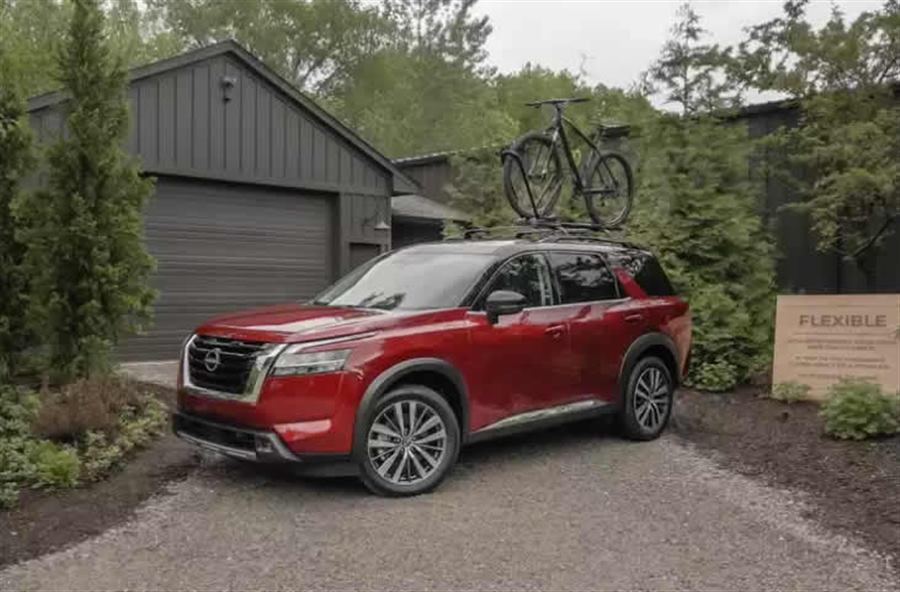
When SUVs first arrived on the American scene, they were purpose-built, off-road adventure and utility vehicles. They weren’t luxurious and they weren’t comfortable; they were work wagons used by forest rangers and farmers. Somewhere along the way, they became eight-seat family vehicles, replacing the station wagon and minivan in most driveways. But the trend we’ve spotted for the 2020s seems to be an effort by automakers to recapture some semblance of that off-road adventurism after decades of moving toward making them glorified tall wagons.
The latest automaker to do that is Nissan, which has redesigned the latest 2022 Pathfinder three-row to be more rugged, more outdoorsy and slightly more capable in the dirt than its solidly street-oriented predecessor without giving up any of the luxury, safety and connectivity that modern families expect in an SUV. I drove the new ’22 Pathfinder through Southeast Michigan recently to see if Nissan’s moves to butch up the new Pathfinder have paid off.
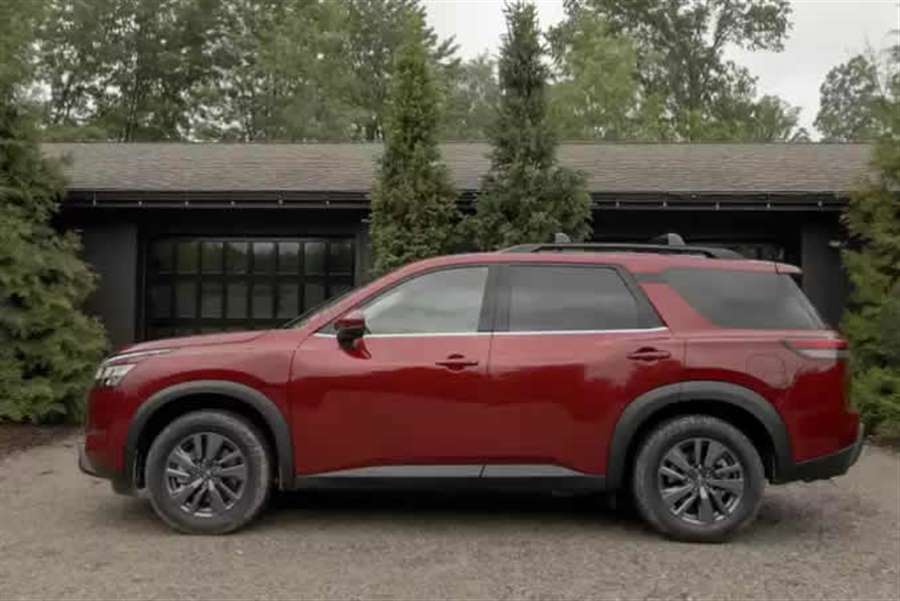
The Family Resemblance Is Strong
The fourth-generation Pathfinder was a generic blob-shaped thing that bore no family resemblance to the chunky original 1986 model at all. This new fifth-generation model is a complete departure that incorporates some styling cues from the original Pathfinder, such as the forward-swept C-pillar, three-slot grille and overall squared-off, thick body styling. It’s actually a little shorter than the outgoing model, but changes its proportions by being taller and wider.I have to say it looks much, much better than the last Pathfinder, with definite family resemblance to the latest angular Nissans like the larger Armada and smaller Rogue. The slim headlights taper into the wide and prominent fenders, with the taillights stretching across the rear to again emphasize the Pathfinder’s width. Its geometric looks make the new Pathfinder feel like a larger vehicle than the one it’s replacing, but the overall dimensions don’t change all that much. Suffice it to say, it both looks and feels big — this was not an effort to slim down the SUV, this was an effort to make it look more rugged and aggressive, and it worked well.
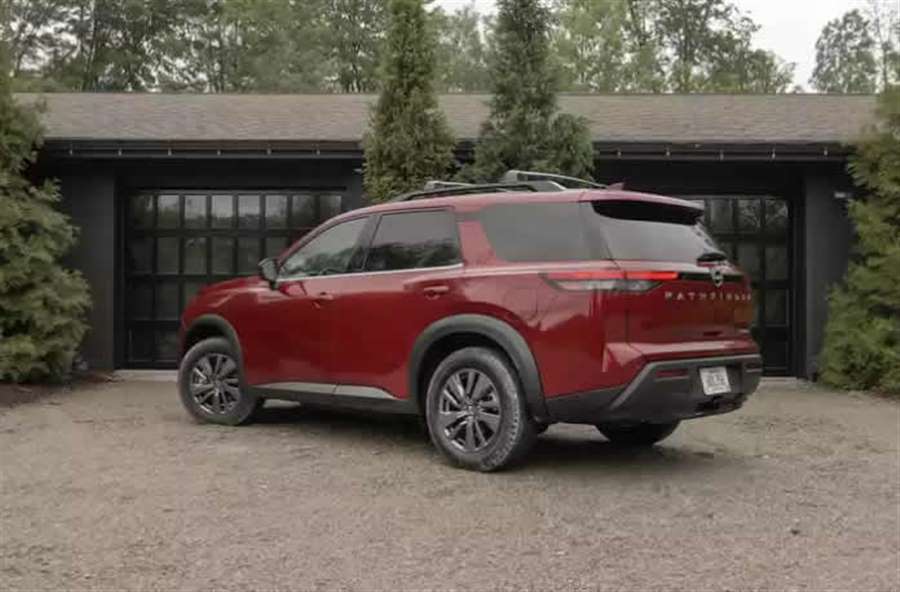
It Expects You to Drive Like the Family’s in There
Powering the 2022 Pathfinder is the same 3.5-liter V-6 that’s in the outgoing model — it makes 284 horsepower and 259 pounds-feet of torque, which is unchanged from the previous Pathfinder. What’s new is what that engine is connected to: a conventional nine-speed automatic transmission, replacing the unloved continuously variable automatic transmission in the old Pathfinder. That change is meant to improve the Pathfinder’s off-road ability, its towing durability, its driving dynamics and more — and in most ways, it delivers. It doesn’t sacrifice gas mileage, which is up 1 mpg combined in AWD versions over the 2020 model (the last model year sold). Lower trim levels increased from an EPA-estimated 22 mpg to 23 mpg, and the AWD Platinum is up from 21 to 22 mpg. The combined rating remains 23 mpg for front-drive Pathfinders, but the city/highway distribution has changed slightly to 21/27 mpg city/highway.Driving the new Pathfinder is best done at a relaxed pace, as if the whole family is on board for a ride and you don’t want kids dropping juice boxes or Grandma to stress any joints. With moderate acceleration, the V-6 is perfectly adequate, the new nine-speed auto-shifts smoothly and calmly, and the whole experience is that of a big, heavy SUV doing what it does best: ferrying the brood to soccer practice or the mall in quiet comfort. The transmission does hunt a lot for its gears, but with nine speeds to play with, this is to be expected — only occasionally does it feel like it’s missing the beat and not keeping up with the driver’s anticipated moves. For example, when coasting down to a stop but then deciding to give it some more power as traffic has cleared from a light, it gets a little confused and might select a gear lower than it needs to. But overall, the powertrain is smooth, refined and perfectly adequate to the task of powering the Pathfinder.
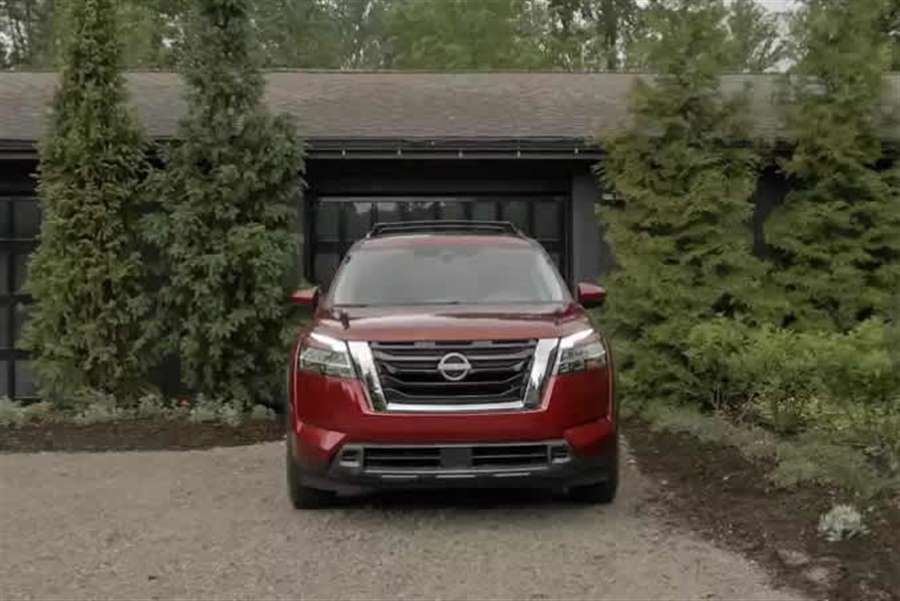
The Pathfinder’s overall feel is of a heavy SUV, however, especially when negotiating tight turns and roundabouts or performing hard acceleration and braking maneuvers. Body movement is pronounced in such situations, squatting hard on its rear haunches under full acceleration, diving noticeably under hard braking and plowing through quick turns with considerable understeer. It doesn’t like being hustled along quickly, lacking the athletic feel that a Ford Explorer has with its tightly controlled body motions and punchy turbocharged engines. Slipping the drive mode selector into Sport mode does improve steering feel and feedback, but it becomes clear to the driver that this is the equivalent of a family minivan, not a sports wagon, and that you (and your passengers) are going to be happiest keeping the Pathfinder at a simmer rather than a full steaming boil.
Comfort and Style Aplenty
But the Pathfinder will happily simmer along all day, with a truly comfortable ride even on high-spec models that have big wheels and low-profile tires. Road noise does make it into the cabin, again thanks to those big wheels and tires, and it’s made even more noticeable by the lack of wind noise to mask it. But the overall serenity of the Pathfinder’s completely redesigned cabin is barely affected by the outside world. The new look inside is excellent, with a modern feel and updated electronics that combine with solid material choices and build quality to create a well-updated cabin.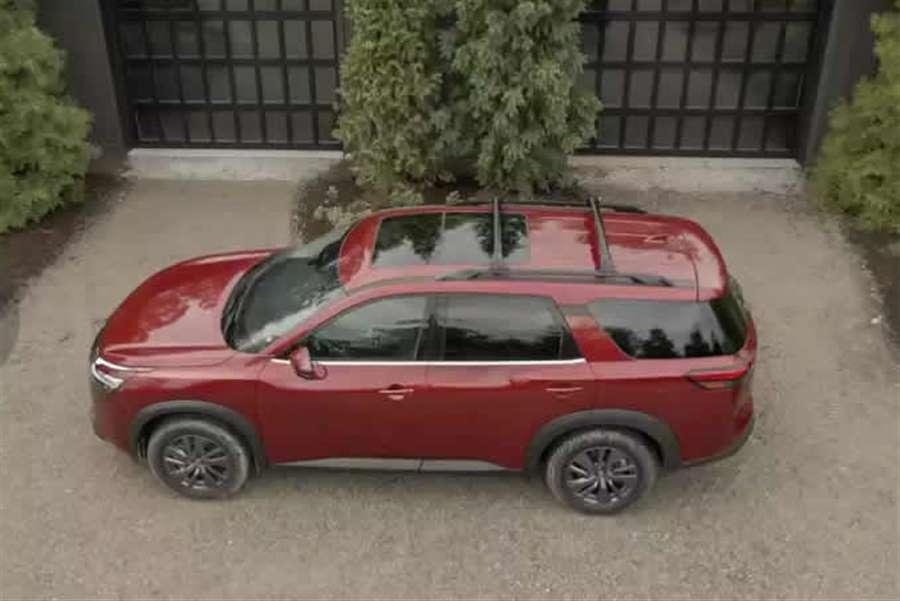
Seat comfort is good, but we’re still not seeing the “magic” of the so-called Zero Gravity Seats. They just feel like seats — no better or worse than any others, really (except, perhaps, for the aforementioned Explorer, which has seat bottoms that feel too short). There’s noticeably plentiful passenger space, however, with tons of room up front or in the sliding second row, both for width and legroom. The third row in many three-row SUVs is often best used only for children, with a few notable exceptions (like the Volkswagen Atlas and Hyundai Palisade). The additional width that comes with the new 2022 Pathfinder makes the third row here a usable size for adults, as well, especially given the second row’s sliding ability, allowing for passengers in the second and third rows to negotiate available legroom among themselves. Third-row ingress and egress is easy, too, thanks to Nissan’s one-touch EZ Flex Latch and Glide button that slides and tilts the second row, even with child-safety seats attached.
The updated interior electronics are welcome, with an available 9.0-inch touchscreen multimedia system that’s located high on the dash for easy visibility and use. It’s accompanied by an available 12.3-inch digital gauge cluster that provides all sorts of information, some more useful than others, and two different configurations that look slick. There’s also an available 10.8-inch head-up display that puts all the relevant information up in the driver’s sight line but features an oddly offset speedometer readout. Still, everything is clear and easy to read, and after some experimentation with configurations and settings, you’re sure to find a setup that provides all the information you want without having to hunt through menus. As with most new vehicles these days, Apple CarPlay and Android Auto come standard, and Wi-Fi connectivity with wireless charging is available.
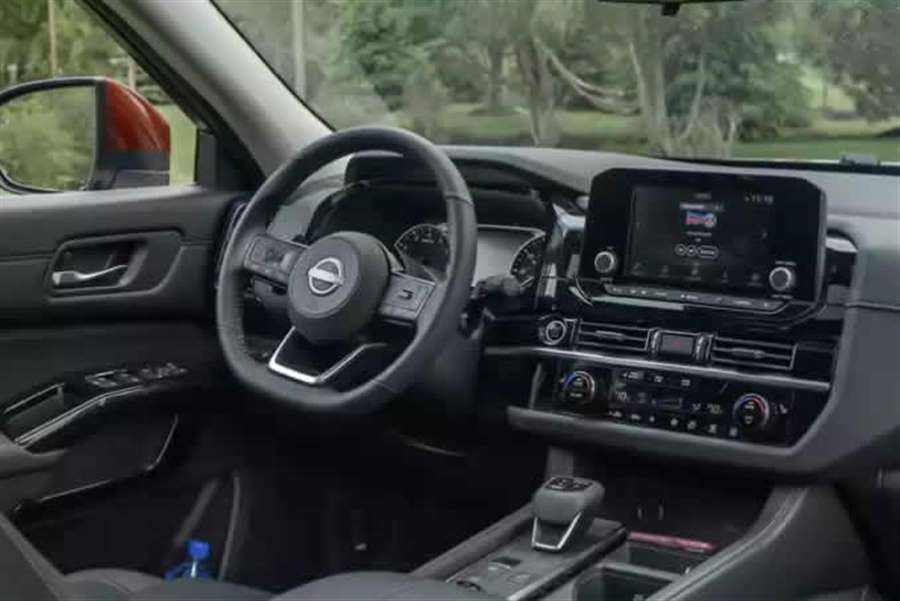
About That Ruggedness …
Nissan felt it important to demonstrate that the new Pathfinder is a capable off-roader, as the changes made to amp up its rugged image are more than just cosmetic. That’s why the company booked some time at Holly Oaks ORV Park north of Detroit for a brief romp through the dirt and mud to show off the Pathfinder’s terrain select function.Rotating the selector through the options to the Mud and Ruts function changes a host of vehicle attributes, while a quick push of the central button engages the automatic hill descent control. And with that, the Pathfinder was off to tackle terrain that it’s unlikely to see in the hands of typical buyers — loose gravel ascents, steep and slippery slopes — which it did without complaint or difficulty, it must be said. We didn’t do any serious rock crawling, but let’s be honest here: Despite the Pathfinder’s looks, this is not a proper off-road machine. It does feature a new clutch that allows for predictive all-wheel drive (no longer waiting for front-wheel slip to be detected before engaging the rears, the computer makes the call before that happens now), but the all-season tires, lack of underbody skid plate protection and no locking transfer case mean this is still a soft-roader, and that’s perfectly fine. You can option up a Pathfinder with accessories that make it a bit more capable, but anyone serious about going further off-road is likely looking at a Nissan Titan pickup in Pro-4X trim instead. Suffice it to say that the Pathfinder will handle rutted dirt roads and family off-grid camping duty just fine thanks to its softer suspension, but you’re not likely to ever see one out overlanding across the Arizona desert.
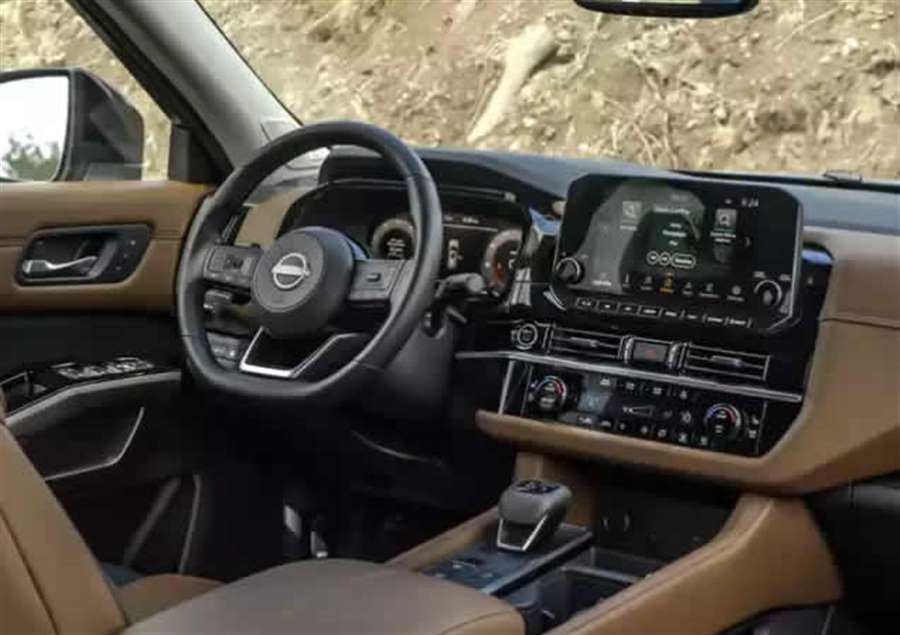
Nissan has kept the trim levels and pricing for the new Pathfinder simple with four trim levels. Two option packages are available, as well, so finding a Pathfinder that has a specific option you want (like the panoramic moonroof or leather interior) means finding the required trim level. The starting price is $34,560 for a front-wheel-drive S trim, which is roughly $1,400 more than the outgoing 2020 Pathfinder, while a Platinum 4WD rings in at just less than $50,000. That’s a healthy jump over the outgoing model, but it does reflect considerable added standard equipment, the most important of which might be the updated Nissan Safety Shield 360 system that brings automatic emergency braking with pedestrian detection, lane departure warning, rear cross-traffic alert, blind spot warning, high-beam assist and class exclusive rear automatic braking — that last one being a key feature for a family car, where kids may be running around the vehicle. The Pathfinder also features a driver alertness sensor, rear door alert and rear sonar as standard, with blind spot intervention, lane intervention and traffic sign recognition as optional. Nissan’s latest ProPilot Assist cruise control is also available, which helps steer the vehicle on the highway but doesn’t let you remove your hands from the steering wheel, unlike GM’s Super Cruise system.
So in the end, yes, the new Pathfinder is indeed a bit more rugged and a bit more capable off-road. But honestly, I think the areas that will matter more to its intended buyers are the better interior space, top-notch connectivity, smooth and quiet ride, and its ability to be an even more comfortable and capable family vehicle. The trend toward being more outdoorsy after enduring pandemic lockdowns will match well with the Pathfinder’s new image and abilities, but it’s good to know Nissan hasn’t sacrificed the aforementioned areas in which the Pathfinder needed to be good in favor of new areas where it really didn’t need to go at all.
(cars.com)
-
2022 Nissan Rogue Interior, Exterior, Engine
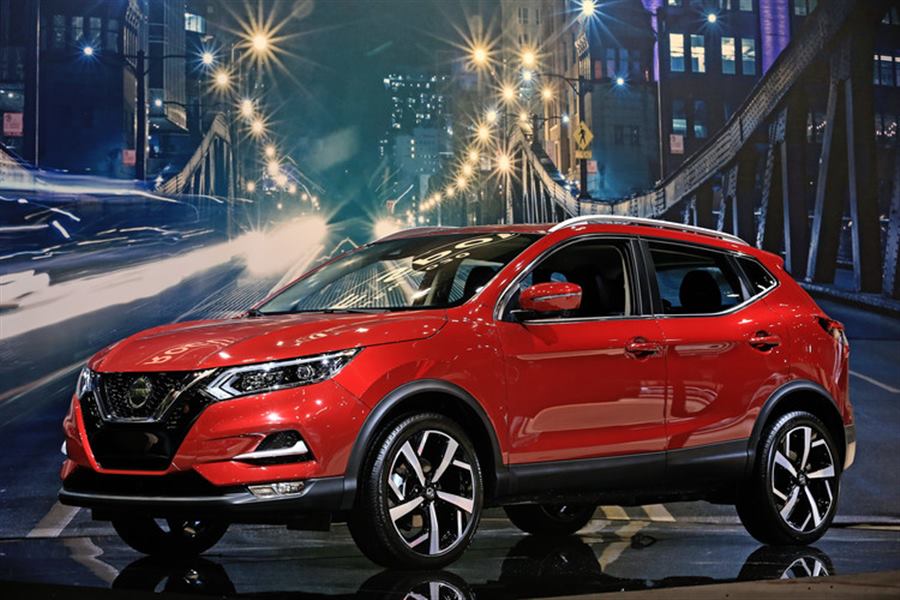
Nissan’s top-selling rogue sport gets a new style with a new front outlook, elongated headlights, new taillights, a VMotion grille and 19-inch wheel. The 2022 model offers an impressive list of standard features which include partly new additions and modifications of the older versions. 2022 Rogue Sport refinements is the new exterior design that offers a more technical feel. Helping provide a greater separation from its Nissan Rogue stable mate. The new front fascia features a new hood, Vmotion grille and bumper. The aggressive lighting treatment includes LED signature Daytime Running Lights.
On US market, Nissan’s operations include automotive styling, engineering, consumer and corporate financing, sales and marketing, distribution and manufacturing. The company is dedicated to improving the environment under the Nissan Green Program and has been recognized annually by the U.S.
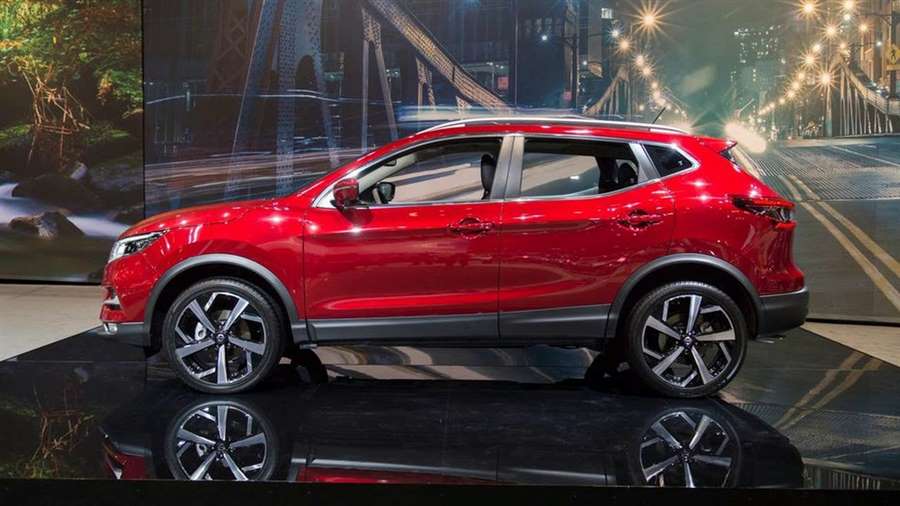
Engine options for new Rogue
The Rogue sport wears a new outlook that closely mirrors that of the Nissan Qashqai model. It supports a new hood house that houses a standard 2.0 litre DOHC. 16 valve inline four-cylinder engine that runs 141 horsepower matched with an Xtronic CVT transmission and Eco mode switching. The exterior design makes this model superior to the early versions/competitors. The 2022 Nissan Rogue design offers a new technical feel, that is worth the pay. To make it a top model the manufacturer has included the Nissan safety shield on its all it three trims, SL, SV AND S. The 2022 Rogue also enhances the outlook of the 2020 model that included the addition of updated system with standard apple play, ProPILOT Assist technology and an audio system of nine speakers.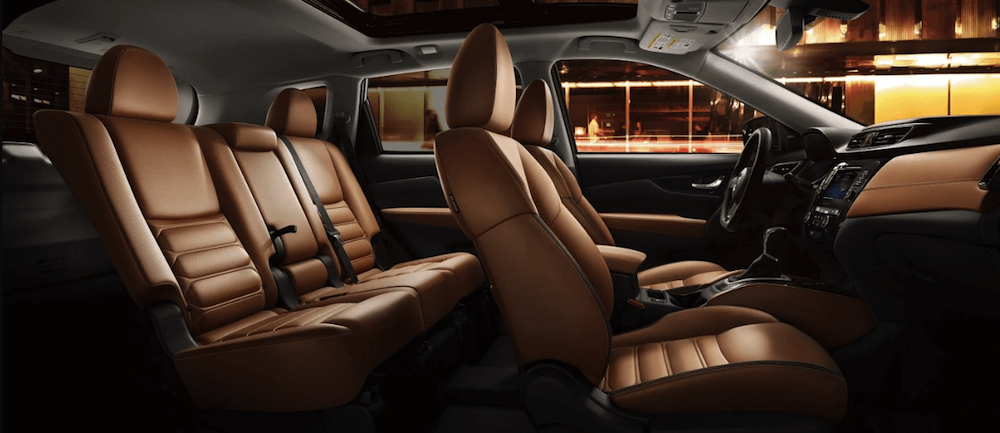
2022 Nissan Rogue price
The 2022 Nissan Rogue sports will go for sale this fall, even though announcements on the pricing are yet to be made, expect a rise on the price. If anything, the pricing range will remain close to that of the current rogue which goes at $22,240. -
2022 Nissan Sentra
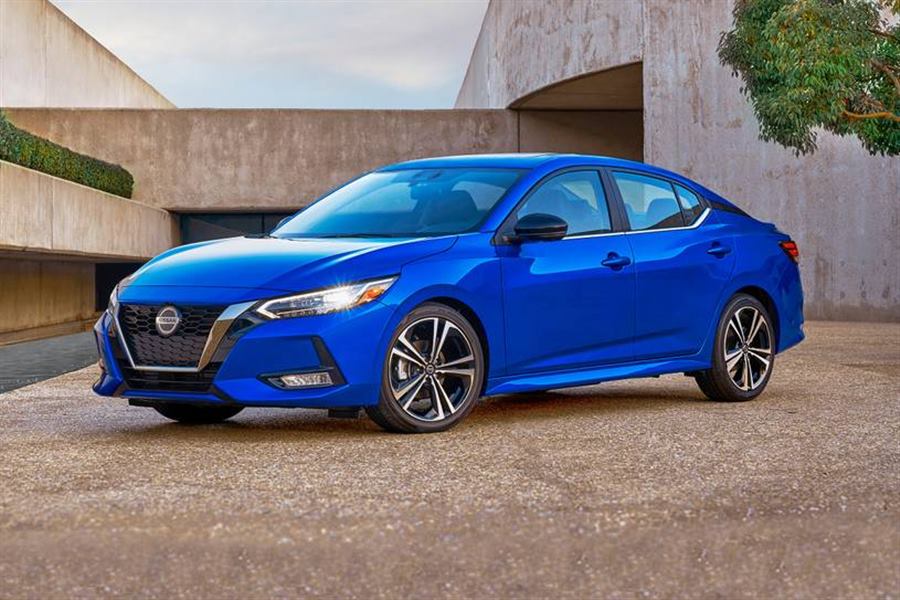
-
From next year, Nissan will no longer sell Navarro on the European market
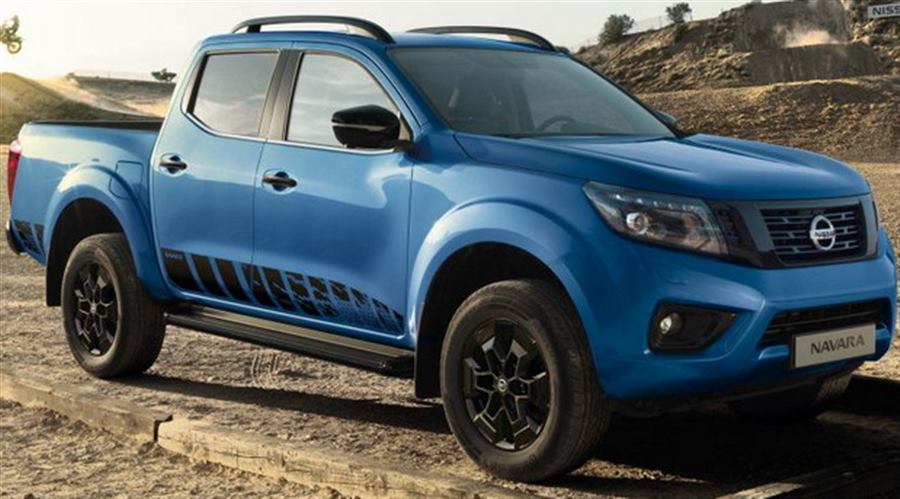
Nissan announced earlier that it plans to close its factory in Barcelona, which basically means that Navarra will be withdrawn from sale. At least in Europe.
According to Nissan, the decision reflects the shrinking pick-up market in the Old Continent, where only 116,280 sales were registered last year. The Renault Alaskan and Mercedes X-Class, sister models of the Navarre, were also made in Barcelona, but were discontinued for the same reason.
"Production of the current-generation Nissan Navara for European markets will end when our Barcelona plant closes in December 2021, and sales will be completed during 2022," Nissan said in a statement to Automotive News. "This reflects the declining segment of trucks in Europe and the shift that many consumers are taking from trucks to our range of modern and efficient vans."
Nissan had an alternative solution to import Navarre from Thailand to Europe, although the board of directors has already decided not to do so.
Navarra was first launched in 1985, and was even produced in Greece for the local market. The 2004 model is still considered very important for the European segment of the truck, as it has revolutionized it with a more comfortable cabin, new features and more refined driving quality. Mercedes also tried to steal sales from segment leaders Ford Ranger and Toyota Hilux in Europe with the X-Class, which was closely linked to the Navarre. It was discontinued in May last year due to poor sales, and was followed by Renault Alaskan.
-
New Batman-inspired Nissan Juke Kiiro revealed
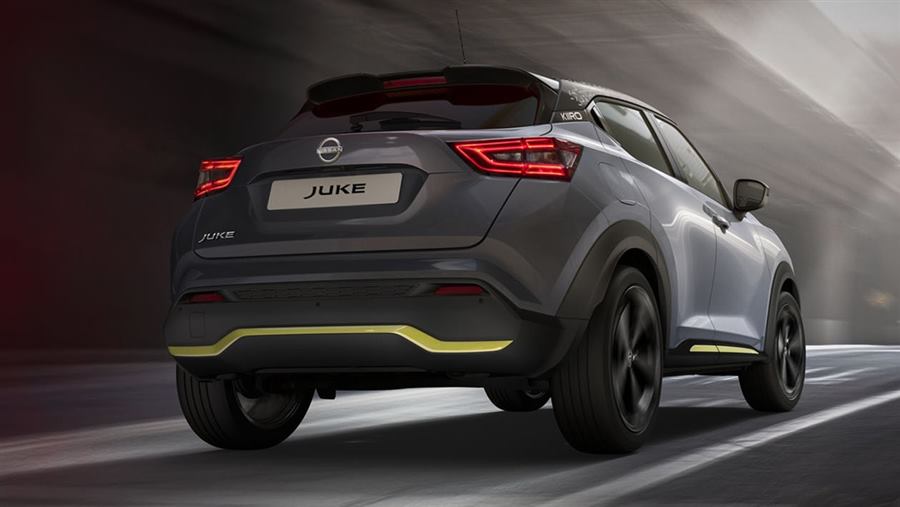
A new Nissan Juke Kiiro special edition has been unveiled. It’s the latest limited-edition version of the current Juke, and will be available to buy from the end of February. Prices are yet to be confirmed, but we’d expect the Kiiro to sit near the top of the range. Only 500 UK cars are available.
‘Kiiro’ is the Japanese word for yellow, but the yellow touches are fairly subtle. On the outside, you’ll notice that the skirts and bumper finishers are in a bright shade, while the inside gets yellow double-line stitching.
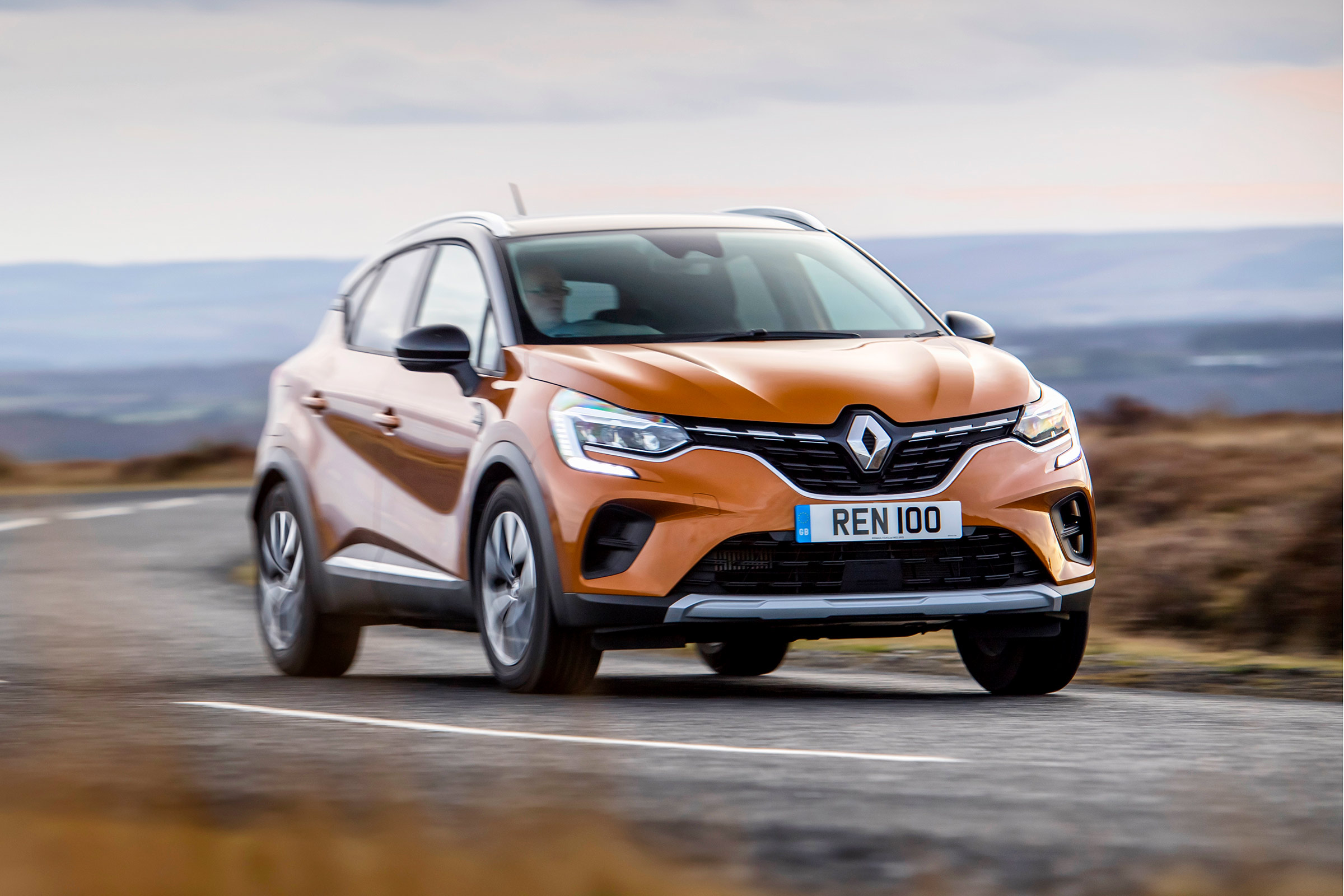
The Nissan Juke Kiiro edition ushers in a new ‘Ceramic Grey’ paint colour for the bodywork, while there’s an exclusive pattern on the door mirror caps and on the edges of the roof that’s been designed to look like it’s flying away. Kiiro badges can be found inside and out, and the seat upholstery is an exclusive design. Finally, the new trim level has aluminium trim on the front bumper and sits on gloss black 19-inch alloy wheels (the biggest size available on the Juke).
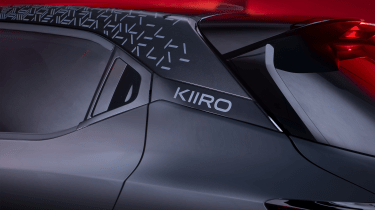 a
aA Nissan spokesperson said the Juke Kiiro’s colourscheme gives the car an understated yet eye-catching look. “We wanted to create a special version that looks serious, with added presence and boldness, but that wasn’t sombre or boring.”
The Kiiro edition will be advertised alongside The Batman film, which is due to premiere on 4 March.
As per every new Juke, the Kiiro is powered by a 112bhp 1.0-litre turbocharged petrol engine. A dual-clutch automatic gearbox is available alongside the standard-fit six-speed manual gearbox.
https://www.carbuyer.co.uk/nissan/juke/303792/new-batman-inspired-nissan-juke-kiiro-revealed
-
New Nissan GT-R Nismo 2020 review
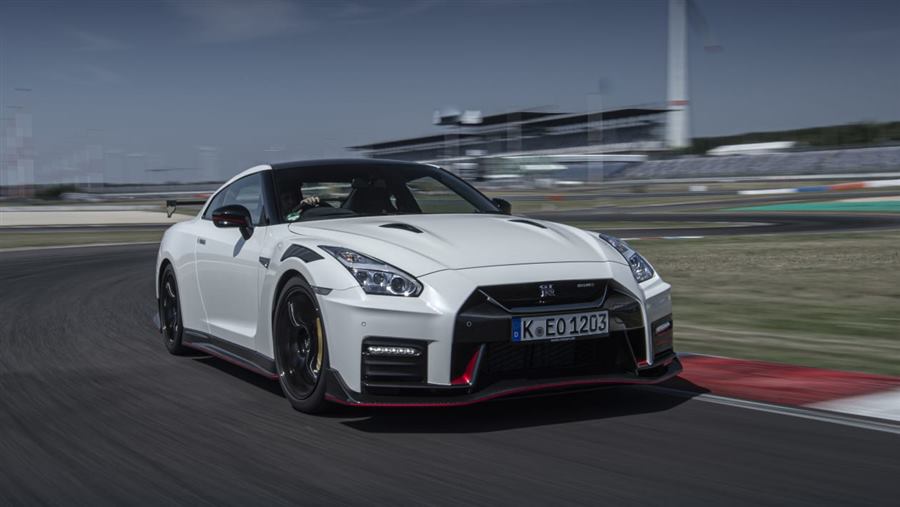
The latest Nissan GT-R Nismo offers savage acceleration and sublime steering, but at £180k it's only for the very wealthy
Verdict
The 2020 GT-R Nismo could be a final farewell for Nissan’s iconic performance car – and it’s a fitting one, because it’s fantastic to drive, with a real depth of ability and great driver rewards. It’s the ultimate GT-R and still a unique experience in the performance car world, but at £180k it’s pricey. At nearly £80,000 cheaper but only slightly less powerful, the GT-R Track Edition seems like better value.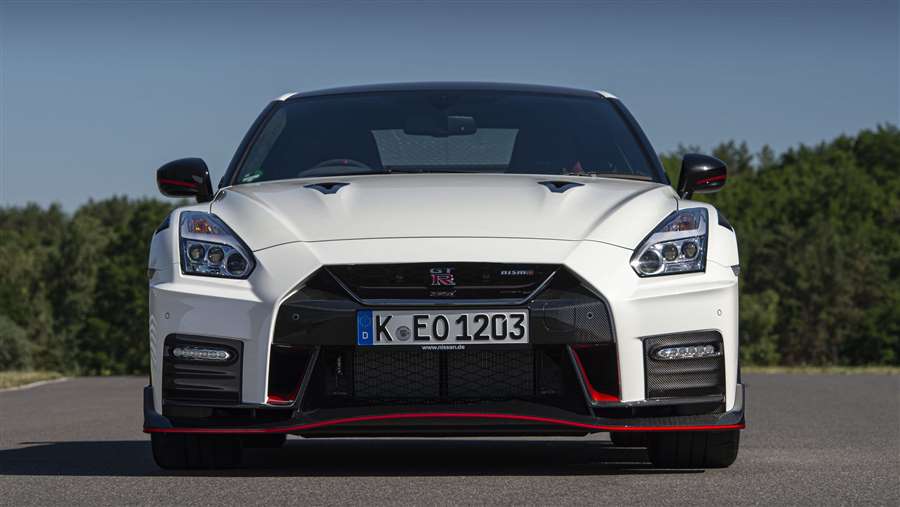
The Nissan GT-R is the perfect example of automotive evolution. Since the car was unveiled in 2007, one of its closest rivals, the Porsche 911 Turbo, has been facelifted, replaced entirely, then facelifted again before a new model launched this year.
Instead of launching new models Nissan has continued to hone the GT-R, the car that challenged the supercar establishment, with just one major facelift over its 13 years on sale.
In Japanese this is called kaizen – the constant need to evolve and improve – and it’s at the heart of the 2020 Nissan GT-R Nismo.
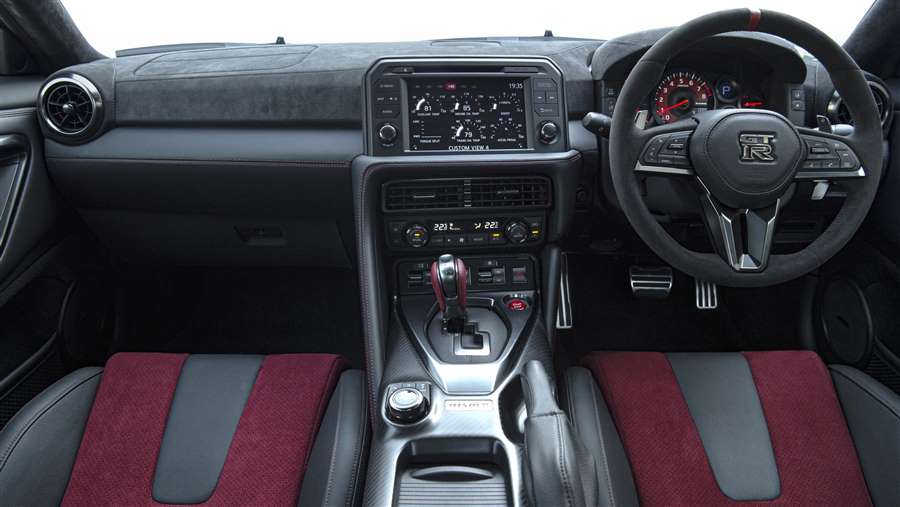
This could be the GT-R’s swansong, tuned by Nissan’s in-house motorsport arm. The Nismo features a carbon fibre bonnet, boot lid and a large fixed rear wing, carbon fibre bumpers and front fenders, and carbon fibre side sills.
There are Brembo carbon ceramic brakes measuring a massive 410mm at the front, and many carbon fibre vents and ducts to aid with cooling the enhanced 3.8-litre twin-turbo V6 engine. The new nine-spoke 20-inch forged RAYS alloy wheels are only 100g lighter collectively, though.
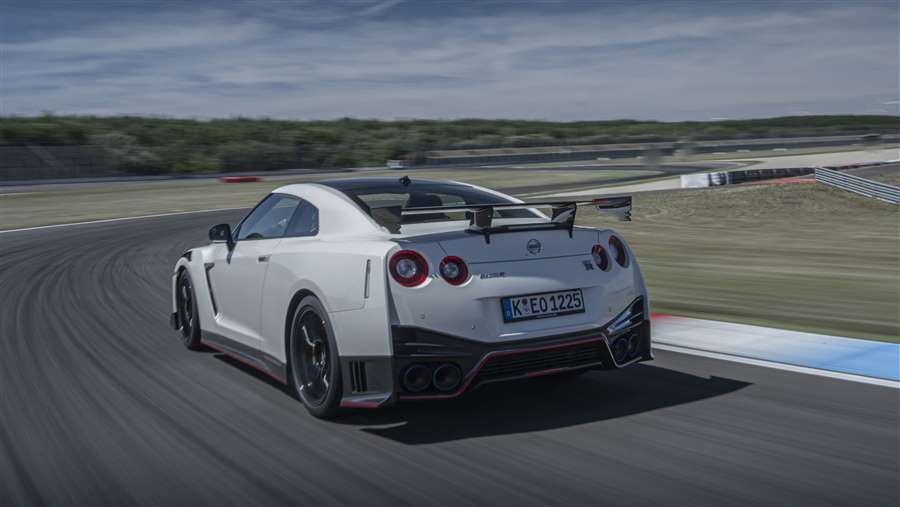
Thanks to a pair of turbochargers from the GT-R GT3 race car, the Nismo makes 592bhp and 600Nm of torque. That’s a lot, but despite the lightweight components the GT-R still weighs 1,725kg, which is also quite a lot for a track-focused model like this.
However, the GT-R has always used its weight to its advantage, controlling it well but using it to work the tyres (very lightly cut Dunlop Sports Maxx track rubber here) to find grip. With four-wheel drive traction has also traditionally been superb, and so it is here too.
The kaizen approach extends to the tweaks to the chassis as well. The Bilstein adaptive dampers have been reprogrammed to make them 20 per cent softer in rebound and five per cent softer in compression – a much needed change compared with the previous Nismo – that Nissan says has been possible due to the near 30kg weight saving.
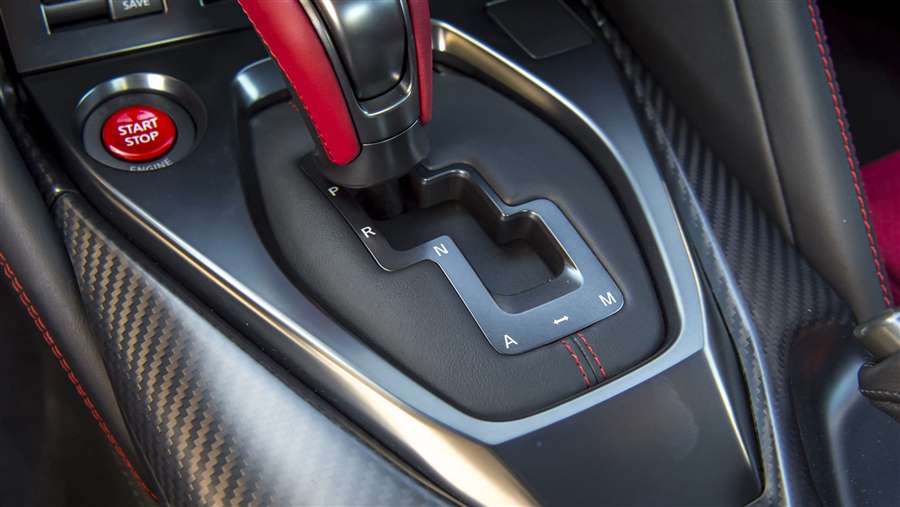
The chassis tweaks and new tyres (one fewer groove for a bigger contact patch) have improved the steering. This is one of the most surprising areas of the GT-R Nismo.
You’d expect it to be fast having looked at the figures, but given the styling, the weight and the four-wheel drive set-up, you might not expect the steering to be so delicate.
It offers genuine feedback. It’s subtle, but the light set-up means you can sense what those lightly treaded front tyres are doing, pulling cambers and the crown in the road, as well as when the fronts start to lose their purchase on the tarmac or load up in a corner.
Even on greasy roads with the temperature hovering just above zero, grip and traction are still great.
With the powertrain and stability control in R mode, and the suspension in Comfort to help even more with finding grip, the GT-R will tighten its line in a corner as you open the throttle. It’s a delightfully natural sensation despite the many, many calculations the car is making underneath you and means you can start to unwind the steering and focus on firing the car down the next straight.
The new turbos are claimed to enhance the acceleration response by 20 per cent; there’s still some lag, but it serves to make the ensuing onslaught as full boost hits all the more outrageous.
Nissan doesn’t quote a 0-62mph time, but around the 2.5-second mark in optimum conditions seems possible. In December over bumpy roads the engine’s aggression spikes the revs over bumps and ruts in the road, such is the massive thrust in the mid-range.
But the motor still revs hard right the way to its limiter like few turbocharged performance cars can. It’s accompanied by an aggressive, gravelly hiss as air is compressed and forced through the intakes by those new turbos, and a V6 howl from the revised titanium exhaust.
Few cars deliver their performance with a blend of brutality and delicacy as the 2020 GT-R Nismo. It’s undoubtedly packed full of tech, but given the sensations it offers and how these are reminiscent of the original, it seems almost old-school and analogue in many ways. The GT-R is sometimes thought of as being a digital car, but the Nismo proves it’s anything but that.
So the evolution of the species has worked here, but in some ways there are some big drawbacks to the GT-R. Despite the softening off of the set-up, and even in Comfort mode, the Nismo is firm. The damping always feels sophisticated, just still a bit much for the UK in the suspension’s default setting – and especially the racier R mode.
Occasionally it knocks the wind from your lungs in this mode – but not quite as much as when you clock the £180,095 price tag.
It’s a very accomplished car dynamically, but while the changes to the car’s interior for the facelift a few years ago injected a little more quality, the infotainment is still stone age compared with a Porsche 911 or an Audi R8. Quality is fine, but nothing more, even if the carbon backed Recaro seats are brilliantly supportive and very comfortable too.
At least the GT-R is practical, with two small rear seats and a fairly large 315-litre boot. It’s not so efficient though; all that power means figures of 19.7mpg and 325g/km CO2, if it matters to you.
Source: autoexpress.co.uk
-
New Nissan X-Terra SUV introduced
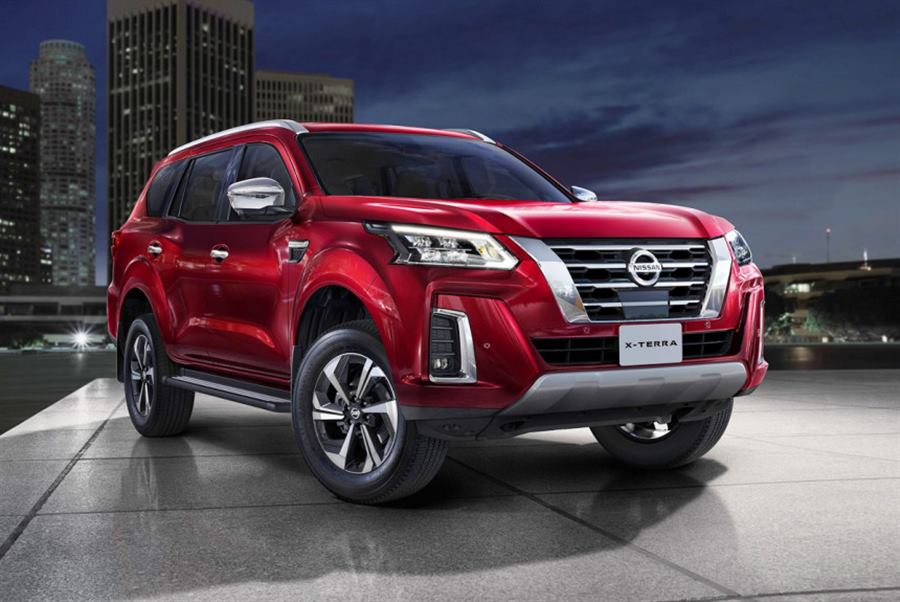
The Japanese company talks about this model as "completely new", which should mean that it is something really new, but the truth is a little different. It is a seriously modernized SUV prepared for the 2018 model year, which is called the Nissan Terra. The frame-mounted SUV was developed on the basis of the Nissan Navara pickup truck, which competes in the market with such rivals as the Mitsubishi Pajero Sport or Toyota Fortuner.
The Nissan Terra SUV is sold in China, Thailand, Indonesia and other Asian countries. That is why the new Nissan X-Terra is intended for the countries of the Middle East, and for that reason Terra had to be "withdrawn from the game" in order to be polished in a way to satisfy more demanding customers from these specific markets.
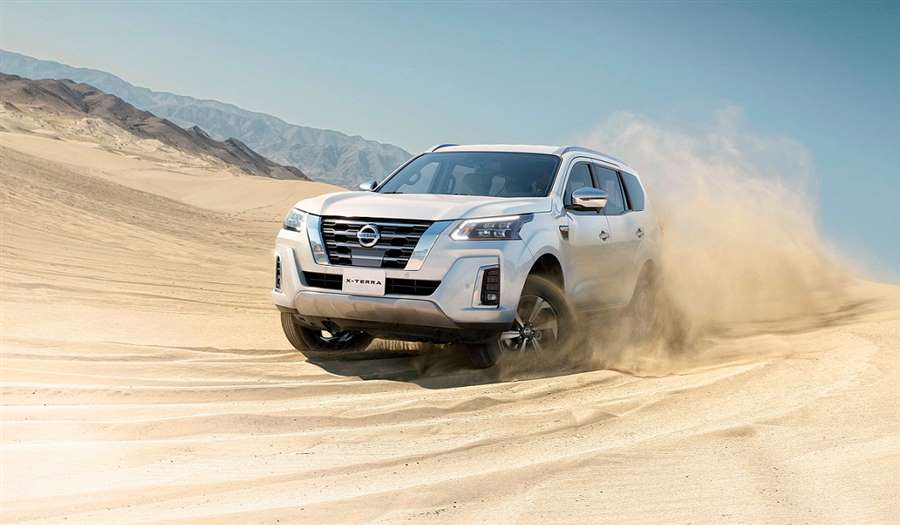
By the way, the constructor reached for the name of the newcomer in the company's archives, albeit with a slight change. The SUV of the same construction configuration was already on the production lines of the company under the name Nissan Xterra, in the period from 1999 to 2015.
The first generation of that vehicle was almost a global model (North and South America, China, Central Asia, the Middle East), but the second generation model is known only to drivers cruising on North American roads.
So, the Nissan X-Terra shown here differs from the original with the Terra sticker in a more seriously modified body style. The muzzle is styled in line with what we saw on the recently updated Patrol model, while the rear end is adorned with various heel doors and lighting in LED technology.
The rims are adorned with a diameter of 17 or 18 inches, while the ground clearance is really enviable and amounts to as much as 243 millimeters. As a result, the restyled 4,900-millimeter-long SUV looks significantly more solid than the donor model.
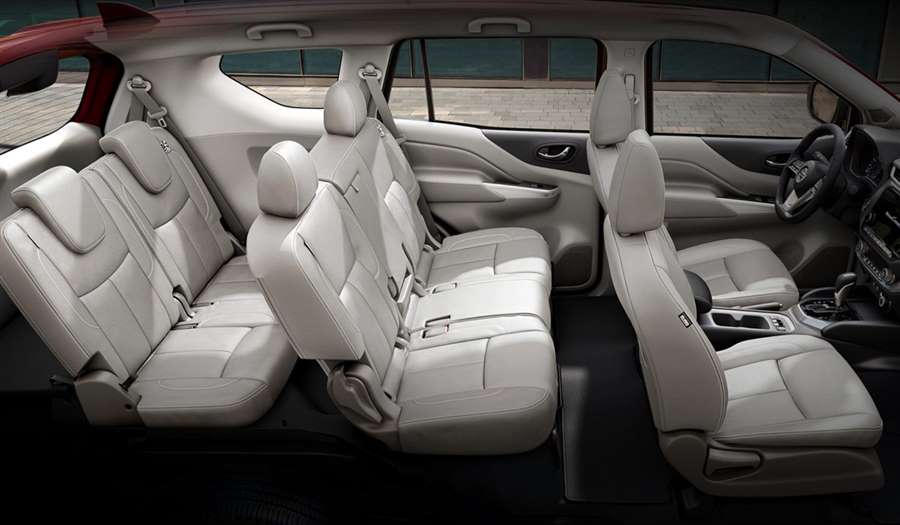
That is why the interior is completely new. If the Terra had an identical front panel as seen on the Nissan Navari pickup, then the X-Terra offers a completely original interior. It is made in the style of modern crossovers of the Japanese brand.
The instrument cluster, with a seven-inch screen, is placed in the middle of that mini panel, while on the central ridge there is another screen of the multimedia system, which can be eight or nine inches diagonally, depending on the configuration.
There is still the third row of seats. The most positioned variant offers an autonomous braking system in critical situations, monitoring of events in the area close to the vehicle, but which is in the driver's blind spot, assistance in maintaining the direction within the traffic lane, as well as some other electronic aids. On top of all the above, it should be said that the sound insulation has also been improved.
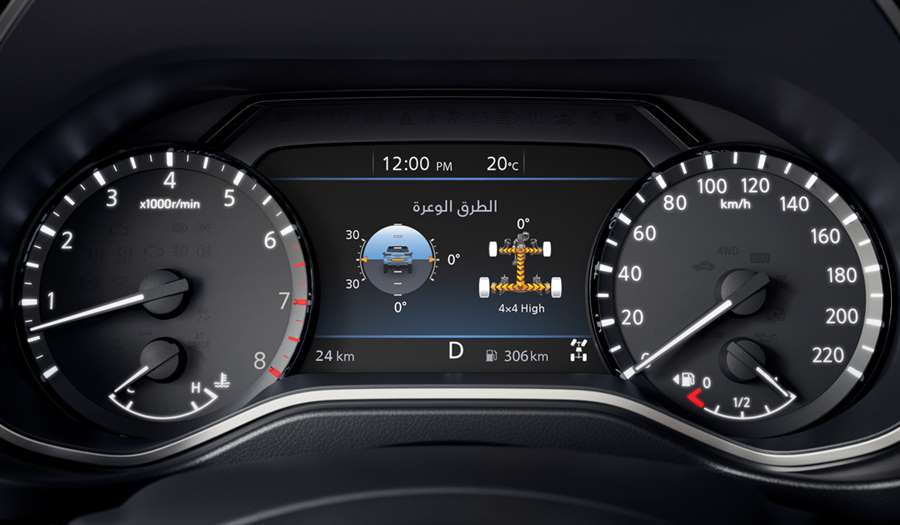
When it comes to the powertrain and chassis, it is necessary to say that these components are identical on the Terra and X-Terra models. The chassis is with double springs at the front and a continuous shaft at the rear end along the coil springs. The drive is on all four wheels with a tight connection and locking of the rear differential. There is also a reducer. There is also an electronic imitation of the lock.
However, the base version of the X-Terra has rear-wheel drive. Since we know that diesels are not at a price in the Middle East, the manufacturer has prepared a petrol, atmospheric 2.5-liter engine for the Nissan X-Terra SUV, which delivers 165 horsepower with 241 Nm of maximum torque. The engine is paired with a seven-speed automatic transmission.
Sales of the new model will begin in December while the starting price will be at the level of 27,200 US dollars. To add that, in Nissan’s global range, Terra and X-Terra will co-exist, and will not overlap in the same market. For example, the Nissan Terra for the 2020 model year was presented in Thailand a few days ago.
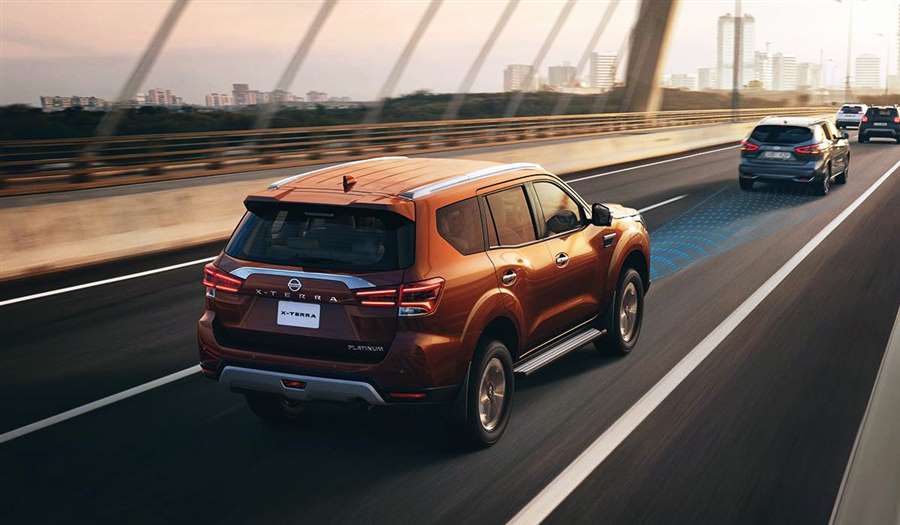
Either way, it’s possible that in a year or two, the Asian Terra will become just as advanced as the X-Terra is today. However, we do not believe that any of these models will reach Serbia, nor the surrounding countries.
-
Nissan Ariya first details
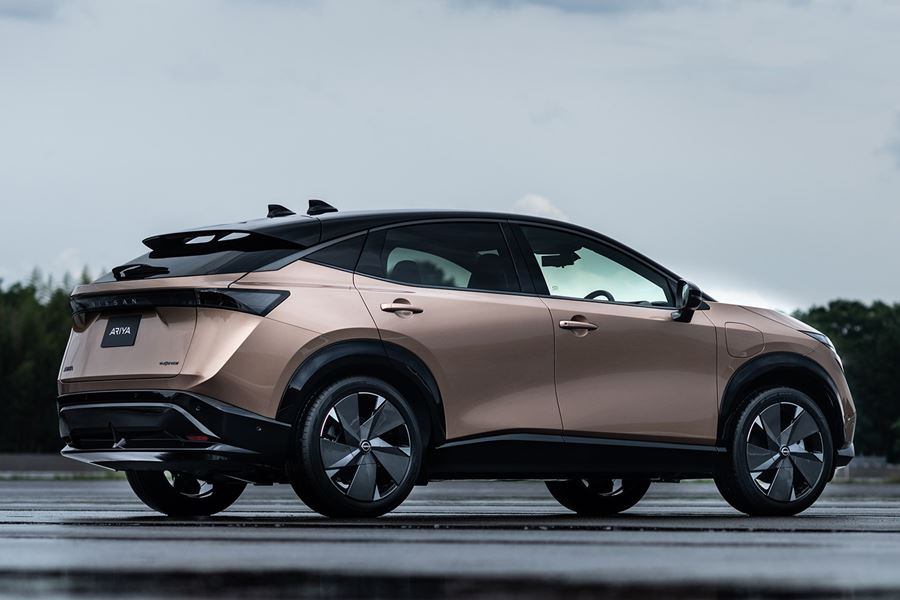
Stylish electric Nissan is packed with tech and goes up to 310 miles
Nissan's second electric car has been unveiled and is due to go on sale in the UK by the end of 2021. The Ariya is an electric SUV that slots between the Nissan Qashqai and Nissan X-Trail in terms of size. It comes with two or all-wheel drive, up to 310-miles of battery range, and two levels of power.
It's Nissan's second electric car after the hugely popular Nissan Leaf. More importantly for buyers, it ushers in a new design language for Nissan. In the metal it looks brilliantly solid and futuristic, while inside it's a step up from what you'd find in a Nissan today.
Main rivals include already established electric cars like the Kia e-Niro and Jaguar I-Pace, as well as upstarts like the Ford Mustang Mach-E, BMW iX3 and VW ID.4.
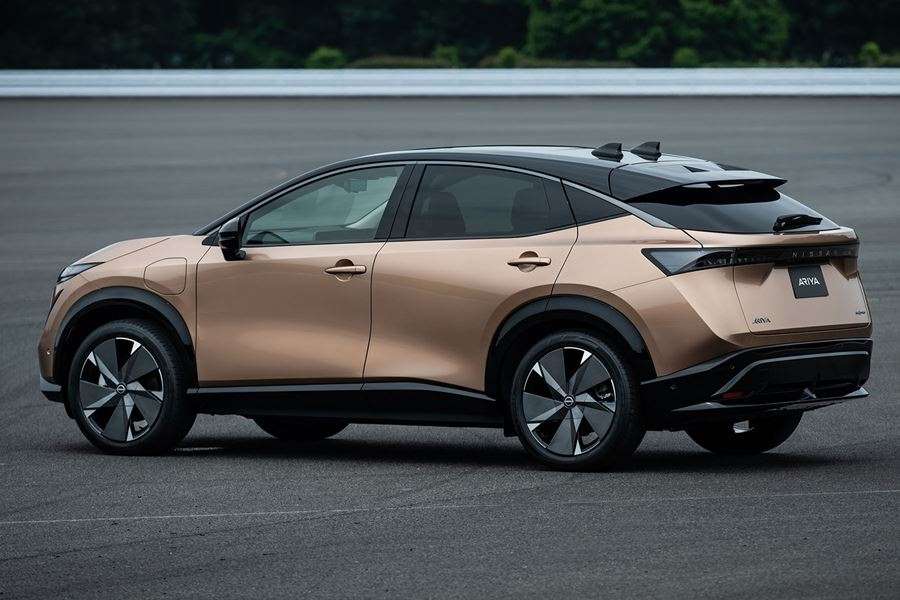
What's it like inside?
As you'd expect, it's bristling with the latest tech. You get a 12.3-inch central touchscreen alongside a 12.3-inch digital display for the driver, and a colour head-up display. There is a suite of driver assistance systems, including an enhanced version of the Leaf’s excellent ProPilot system semi-autonomous adaptive cruise control, with lane-keeping assistance and Nissan’s Safety Shield active safety systems.The Ariya gets a new 'hey Nissan' voice control system as well as Alexa voice functionality. There's also a Nissan smartphone app to check battery status and set the climate control remotely as you can in many of its electric rivals.
Nissan says that it has the room of a much larger car inside, and this is down to the space efficiency of an electric car, which does not need to house the bulky engine and gearbox in the usual place.
It's a smart new look
The Ariya is certainly more stylish than the Leaf. There are ultra-slim LED headlights upfront, with a contrasting light blade at the rear. It gets animated indicators, two-tone paint schemes and sits on striking large wheels. The design was previewed in 2019 in a concept car – also called the Ariya – and much has remained unchanged going into production.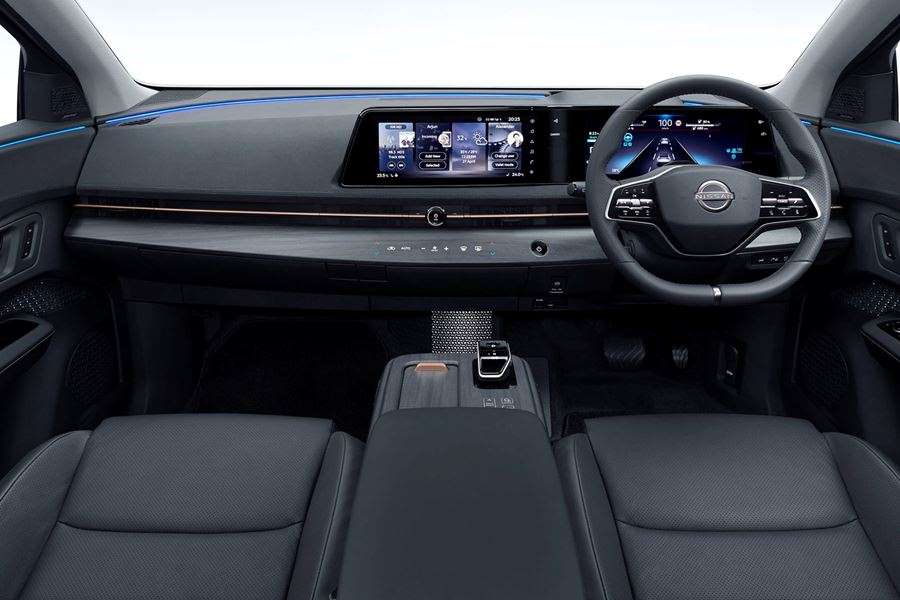
It has a long wheelbase (the distance between the axle lines), which should deliver that promised extra room inside. It's about the same length as an X-Trail, but the wheelbase is more than 7cm longer.
Performance and range – very competitive
The Ariya comes with the choice of two- or four-wheel drive, and will be offered with two power and torque outputs. The entry-level front-wheel drive 63kWh Ariya develops 220hp and 300Nm for a maximum speed of 99mph and a 0-62mph time of 7.5 seconds. Nissan says that this version will have a 233-mile range in real-world WLTP testing. The version with the larger 87kWh battery pack delivers 245bhp with the front-drive motor, and this one covers up to 310 miles on a single charge.The four-wheel drive versions use what Nissan calls its e-4orce system. With the 63kWh battery pack you get 275hp for a 0-62mph time of 5.9 seconds and a range of up to 211 miles. The 87kWh four-wheel drive model boasts 310hp and 285 miles of range.
Star of the show will be the range-topping Ariya 87kWh Performance model. You get 395hp and 600Nm of torque for a 0-62mph time of 5.1 seconds. Maximum speed is 124mph. Battery range for the Performance model drops to 248 miles.
Charging options
The 63kWh Ariyas get a 7kW charger for home connections and the the 87kWh versions come with a 22kW three-phase set-up, where the home set-up can deliver this. The good news is that it uses the latest CCS charger set-up, and can support the fastest public charging, with up to 130kW.Source: parkers.co.uk
-
Nissan has announced a battery factory and production of a new electric crossover in the UK
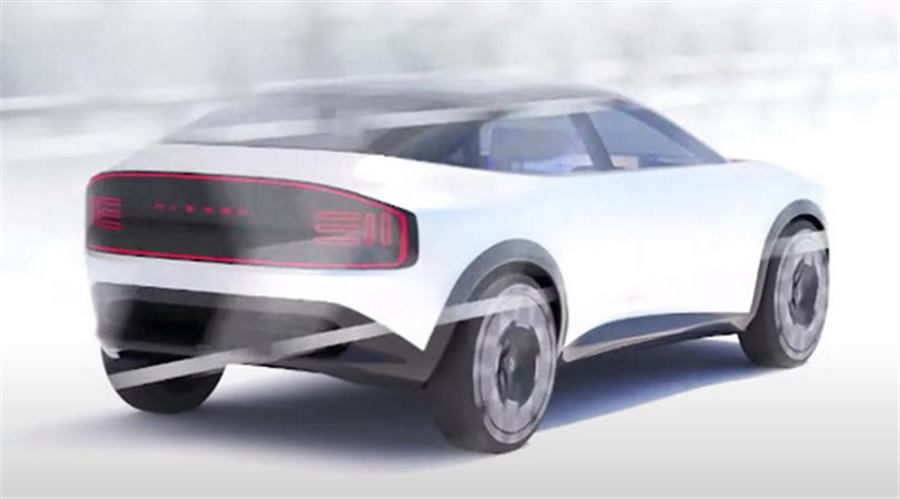
Nissan has confirmed plans to electrify its operations in British Sunderland, with a billion pounds earmarked for the production of batteries and a brand new electric car.
According to Autocar, the new EV36Zero production initiative is jointly funded by Nissan, its battery manufacturing partner Envision AESC and Sunderland City Council. It will, the brand says, bring together "electric vehicles, renewable energy sources and battery production, setting the stage for the future of the automotive industry".
The project involves about 6,200 jobs on site and across the supply chain. EV36Zero's announced plans coincide with the 35th anniversary of the Sunderland factory.
Nissan recently unveiled plans to expand its battery manufacturing plant in Sunderland, managed by engineering partner Envision, to supply more batteries for the Leaf, which is being made in the UK, in line with foreign trade rules after Brexit. Now the completely new plant will supply units for all Nissan EV models, while Nissan is working on creating "the first ecological system for the production of electric cars in the world."
The new battery factory will far exceed the 1.9 GWh capacity of the existing plant with a final capacity of 35 GWh - which corresponds to the output of Tesla's location in Nevada. Nissan has announced that it will ship batteries for up to 100,000 of its EVs a year.
Production of the new units in the UK will also make them cheaper, resulting in “EVs being available to a growing number of customers in the future,” Nissan said.
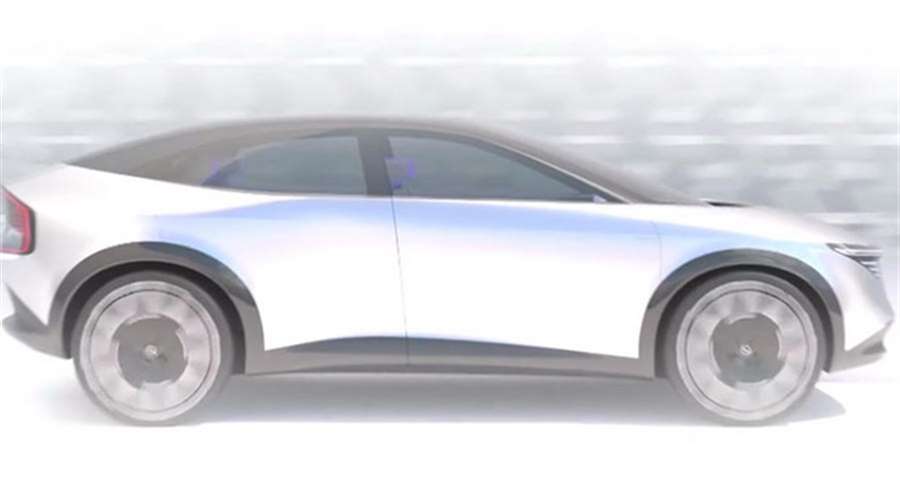
According to the BBC, the investment of the British government in that location is estimated at "tens of millions of pounds", but the specific figure has not been announced.
The inclusion of the Sunderland City Council in the scheme expands the development of the "micro network" of "100% renewable" electricity. Building on the renewable energy sources already in place at Sunderland, Microgrid plans, valued at around £ 80m, could install up to ten new solar farms and implement a direct link to "renewable energy from the UK grid".
In the meantime, some £ 423 million will be allocated for the production of a new electric crossover that "promises the design, efficiency and technology of next-generation batteries, making the transition to electric driving even more affordable".
Nissan has not yet released details about the new electric crossover, although the announcement images suggest it will be slightly smaller than the Ariya model, but will adopt a similar coupe-style silhouette. It will use the same CMF-EV platform that Nissan Aeiya has and the new Renault Megane E-Tech.
The start date of production is not specified, but the current generation Leaf will go out of production around 2024, suggesting that the new model could be a replacement for Nissan's pioneering EV.
The Sunderland plant will produce a new EV for the European market, which will result in the creation of 909 new jobs.
-
Nissan LEAF review: Model Lineup, Exterior, Interior, Driving Impressions
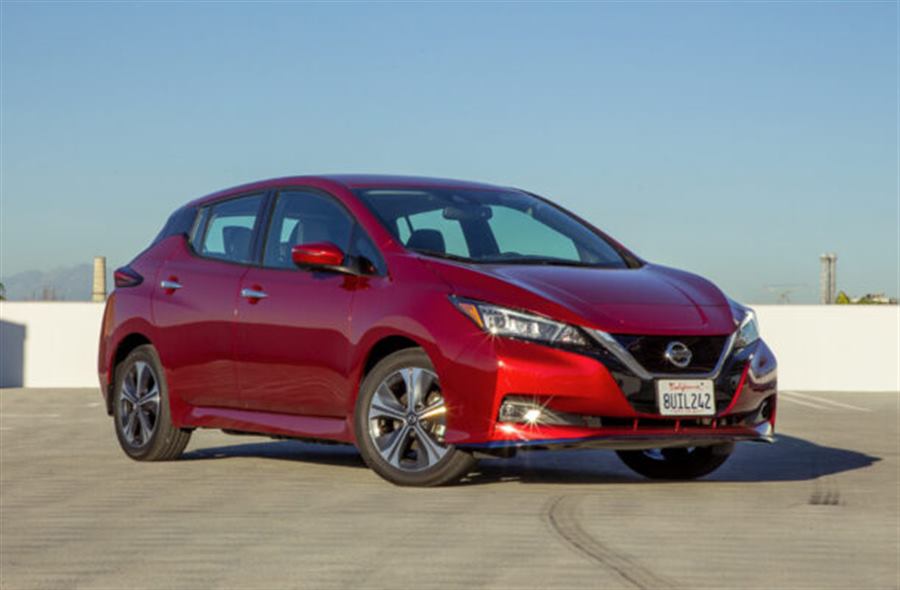
The Nissan Leaf is a front-wheel-drive hatchback electric car that seats five and comes very well equipped. It’s exceptional for its reasonable price, especially the version with 149 miles of range, although the costlier Leaf Plus, with its bigger battery pack, can go 226 miles.
That “reasonable” price is what’s new for 2022, as the cost of the entry-level S model drops more than $4,000, while other models are cut more; the SV Plus is more than $5,000 less than last year, and not only that, it gets a Technology Package with significant safety and convenience features. And for 2022 Nissan throws in even more: DC fast charging can do an 80% charge in 45 minutes.
The Leaf is no longer conspicuous as an electric car, as it was in the beginning. And the modern cabin boasts materials that are a cut above most economy cars. And there’s excellent cargo space, with 23.6 cubic feet behind the folding rear seat.
The electric motor in the base Leaf makes 147 horsepower, while the Leaf Plus makes 214 hp. But even that 147 hp provides quick acceleration in the city, while the light steering makes it fun. Out on the highway, the 214 hp of the Leaf Plus is appreciated.
The Leaf is aptly named, as it’s hard to find a car that’s any greener. The range of the base Leaf of 149 miles is shy of some rivals (all of them more costly), but the Leaf Plus can go 215 or 226 miles, depending on equipment, in particular the size of its wheels. On a Level 2 240-volt charger, the Leaf Plus can take as much as 12 hours to fully charge.
The NHTSA gives the Leaf five overall stars in safety, with four stars in the forward crash test. The IIHS hasn’t fully tested it yet, but notes that over the years, the Leaf has one of the lowest fatality rates among small cars.
Standard safety equipment includes automatic emergency braking, blind-spot monitors and active lane control. The SV and SL get adaptive cruise control and Nissan’s ProPilot driver-assistance system that can steer, stop, and start the car in many circumstances.
Model Lineup
Made in Japan, the base Leaf comes as S and SV, while the Leaf Plus comes as S, SV, and SL.
The Leaf S is $28,375. It’s equipped with DC fast-charging, cloth upholstery, an 8.0-inch touchscreen with Apple CarPlay/Android Auto, and 16-inch steel wheels.
The Leaf Plus S is $33,375, and for that extra $5,000 you get the 226-mile range, thanks to a larger 62-kwh battery pack. The SV is $36,375, adding navigation, a heated steering wheel, heated mirrors, adaptive cruise control, and Pro Pilot.
The $38,375 Leaf Plus SL adds leather upholstery and a Bose sound system.
The Leaf comes with a 3-year/36,000-mile warranty, but it’s the battery warranty that matters more: 8 years and 100,000 miles.
Exterior
The Leaf has lost the bulbous shape of its first generation, looking now like a traditional hatchback, with no signs that it’s an electric car. The lines are tidy and plain, and the details are a tiny bit sporty.
Like many Nissans, the Leaf has a strong V-shaped grille, complemented by black trim from the front to the rear and even up on the roof.
Interior
Even in the cabin, you can barely tell from the instrument panel that this is an electric car. The cabin materials are simple, and the standard cloth seats are preferable to the available leather. Many electric cars don’t absorb the tire and road noise at highway speeds, but the Leaf does that job very well.
The front seats have good padding and bolstering, but not-so-good support at the shoulders. And the steering wheel isn’t telescopic, so long-armed or short-armed drivers might find it awkward to find a comfortable seating/driving position.
There’s adequate room in the rear, and rear seat comfort itself is acceptable, with decent head and leg room. A six-foot passenger can fit behind a six-foot driver.
Surely there will be enough cargo space, with 23.6 cubic feet behind the split rear seat, and 30 cubic feet with it folded.
Driving Impressions
Forget about the Leaf being electric; the acceleration is smart for a small car, period. That’s true even with the base Leaf. However, out on the highway, where acceleration is more of a challenge coming on from 50 mph or more, you’ll feel the need for the Leaf Plus and its 62-kwh battery pack.
Both have a mode that enables driving with just one pedal; this is, regenerative braking occurs when you lift off the accelerator pedal. Some people like that, and from an efficiency standpoint it extends range because it recharges the batteries.
The Leaf isn’t nimble on account of its batteries’ weight, but Nissan engineers have done a good job of mounting that weight low in the car, so the Leaf is well balanced, and stable, even with a ride height that’s above most small cars. The suspension tuning isn’t perfect, as rough spots on asphalt come through, but it’s acceptably composed at nearly any speed.
Final Word
The 2022 Nissan Leaf puts economy-car goodness into its hatchback body, and powers it with electricity alone. That makes it one of the cleanest new cars you can buy—and with tax incentives and credits, it’s an affordable and pleasant way to make the switch from gas-powered cars.
Source: newcartestdrive.com
-
The first details about the all-new Nissan Qashqai
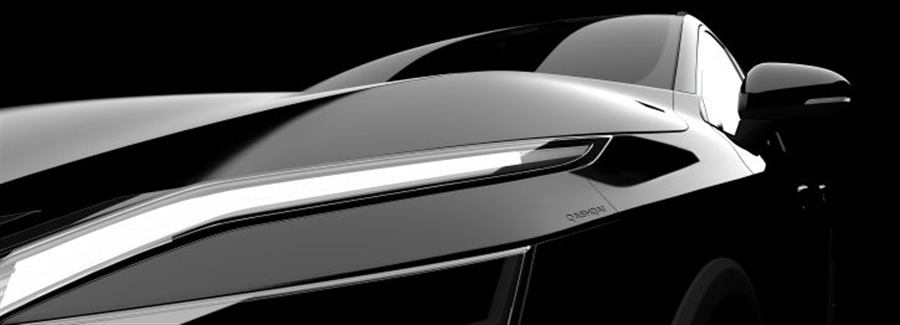
One of the first and best-selling mid-size SUV models in the world is Nissan's "Qashqai". The third generation of this crossover is now in preparation, which, according to the announcements, will bring many changes in design and advanced technologies. As expected, electrified versions will be offered for the first time.
As a pioneer in the medium crossover segment, the "Qashqai" has been sold in Europe since 2007, where over 3 million units have been produced to date.
By the time it was replaced by the second generation in 2014, 17 direct competitors followed the "Qashqai" in the market with their models.
Despite the arrival of many European competitors, the first generation is sold in over 200,000 units per year during its lifetime.
Now the current model has as many as 26 direct competitors, among which are: "Renault Kadjar", "Ford Kuga", "Hyundai Tucson", "Mazda CKS-5", "Skoda karoq" and many others.
That is why it is very important for the new generation to continue at a successful pace and that is why its approach is very serious.
The new Qashqaii is based on the all-new CMF-C (Renault-Nissan) platform. It has been announced that it will use technologies from higher categories of cars, as well as that the proportions will be maintained. In terms of construction, the body will be lightened by as much as 60 kg, but also 41% stronger.
For now, it is known that it will be offered with front-wheel drive and 4 × 4, as well as with a 1.3-liter gasoline engine with mild hybrid technology, and Nissan's innovative e-POVER system, which contains an electric drive, is mentioned.
In conventional hybrid wheel systems, it is powered by an electric motor and a petrol engine, however, in the e-POVER system, the petrol engine is not connected to the wheels - only on a full battery.
The new "Qashqai" will be equipped with the next generation of ProPILOT for driving assistance, and the premiere is expected in the spring of 2021.










